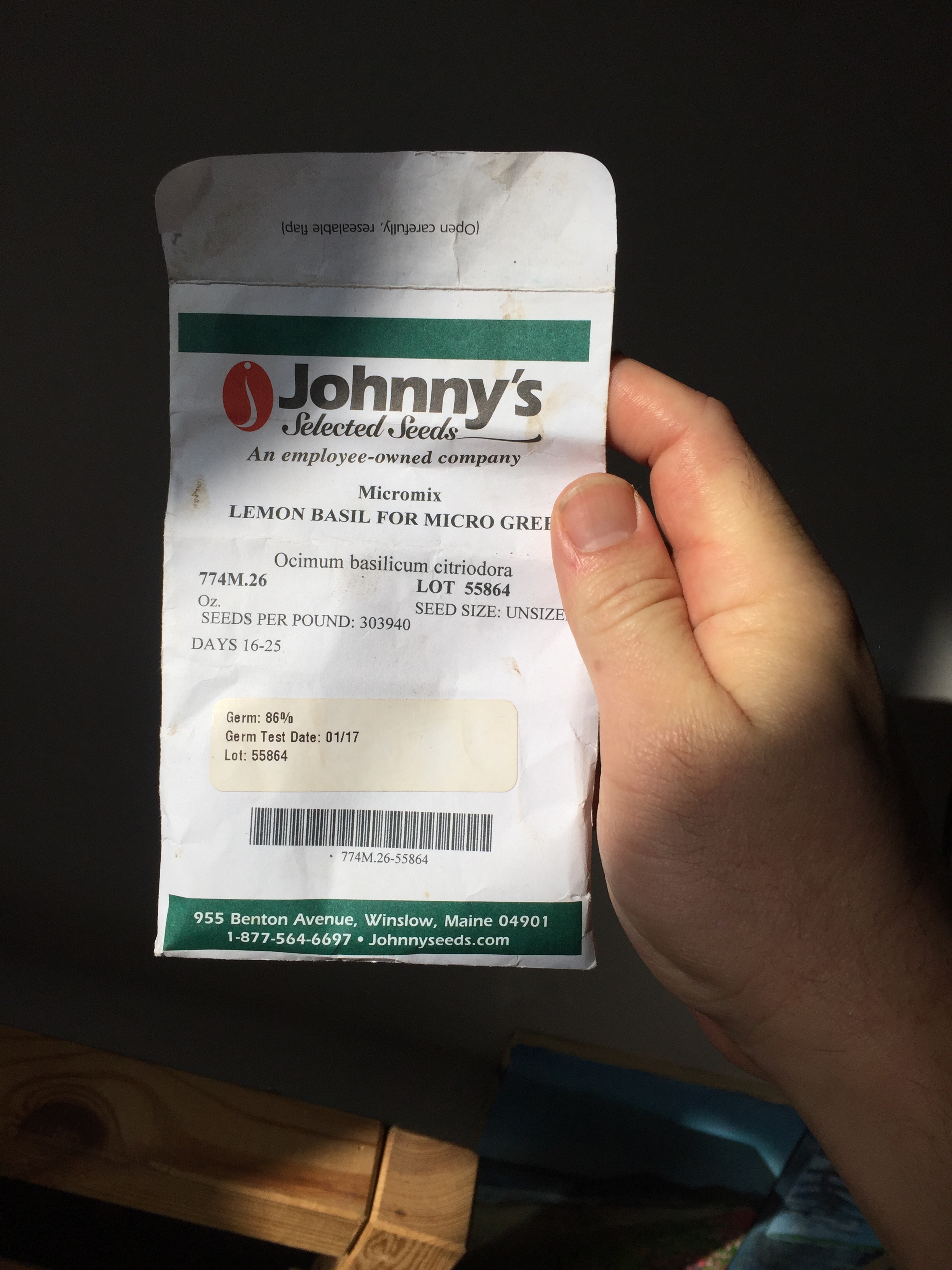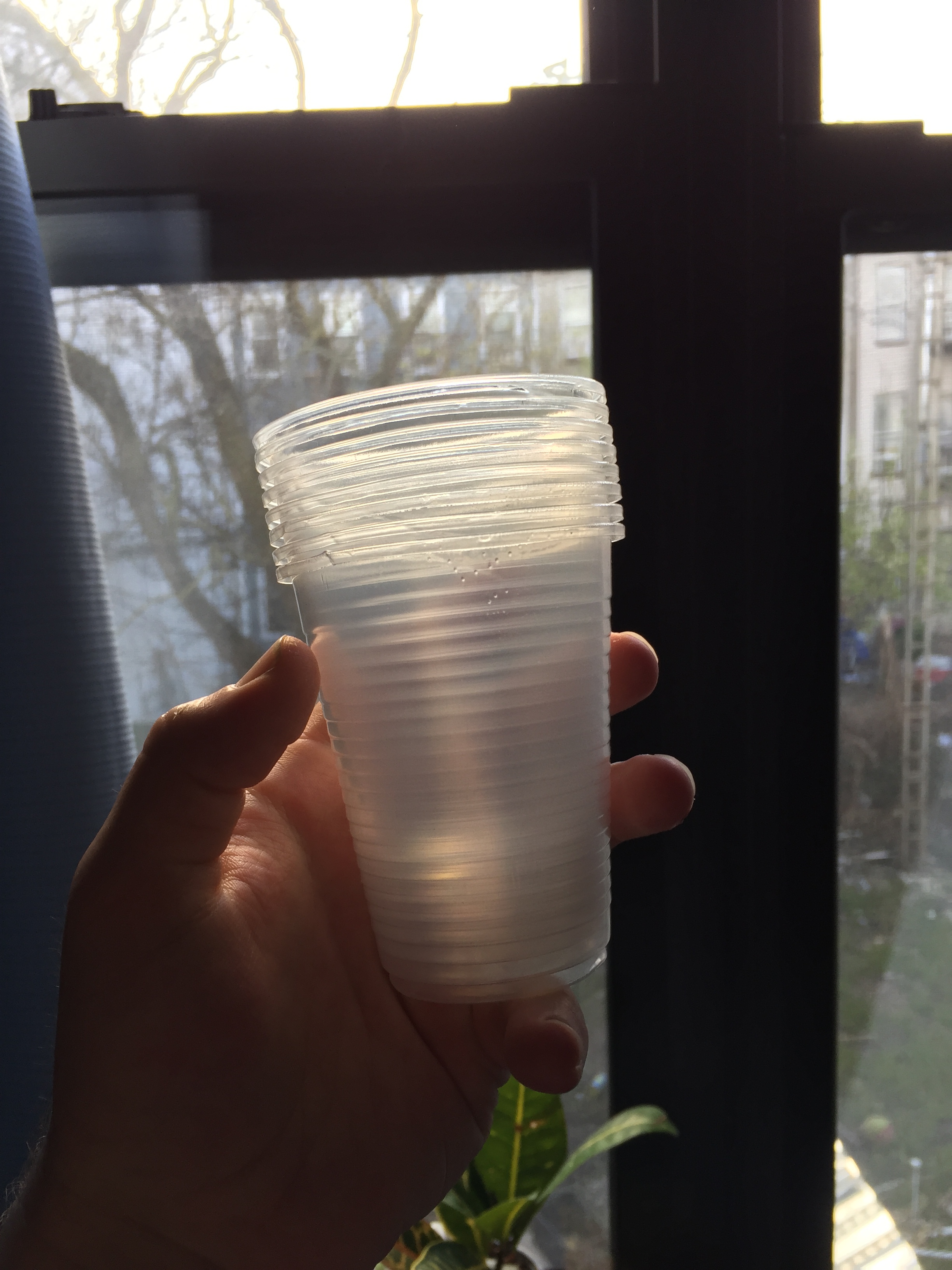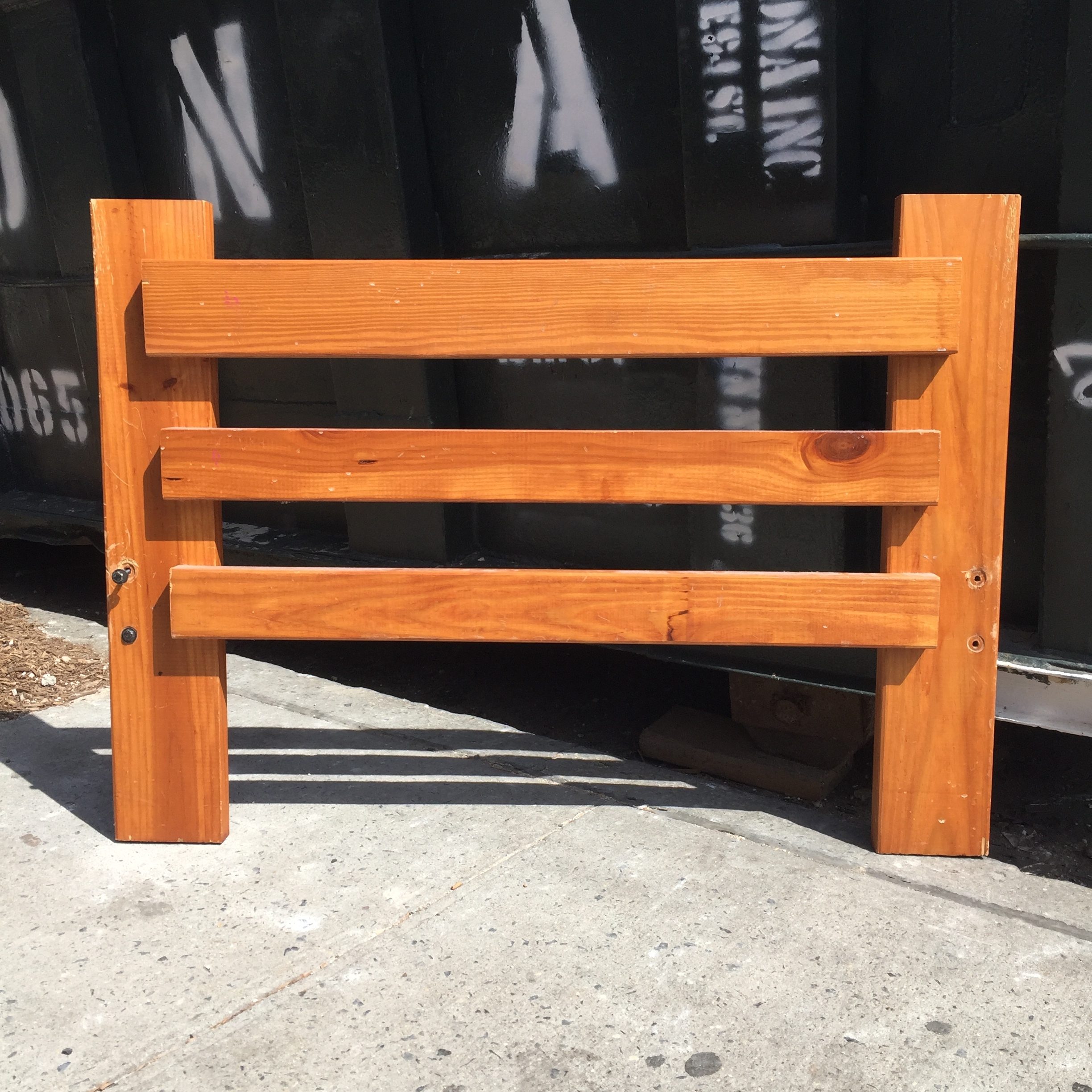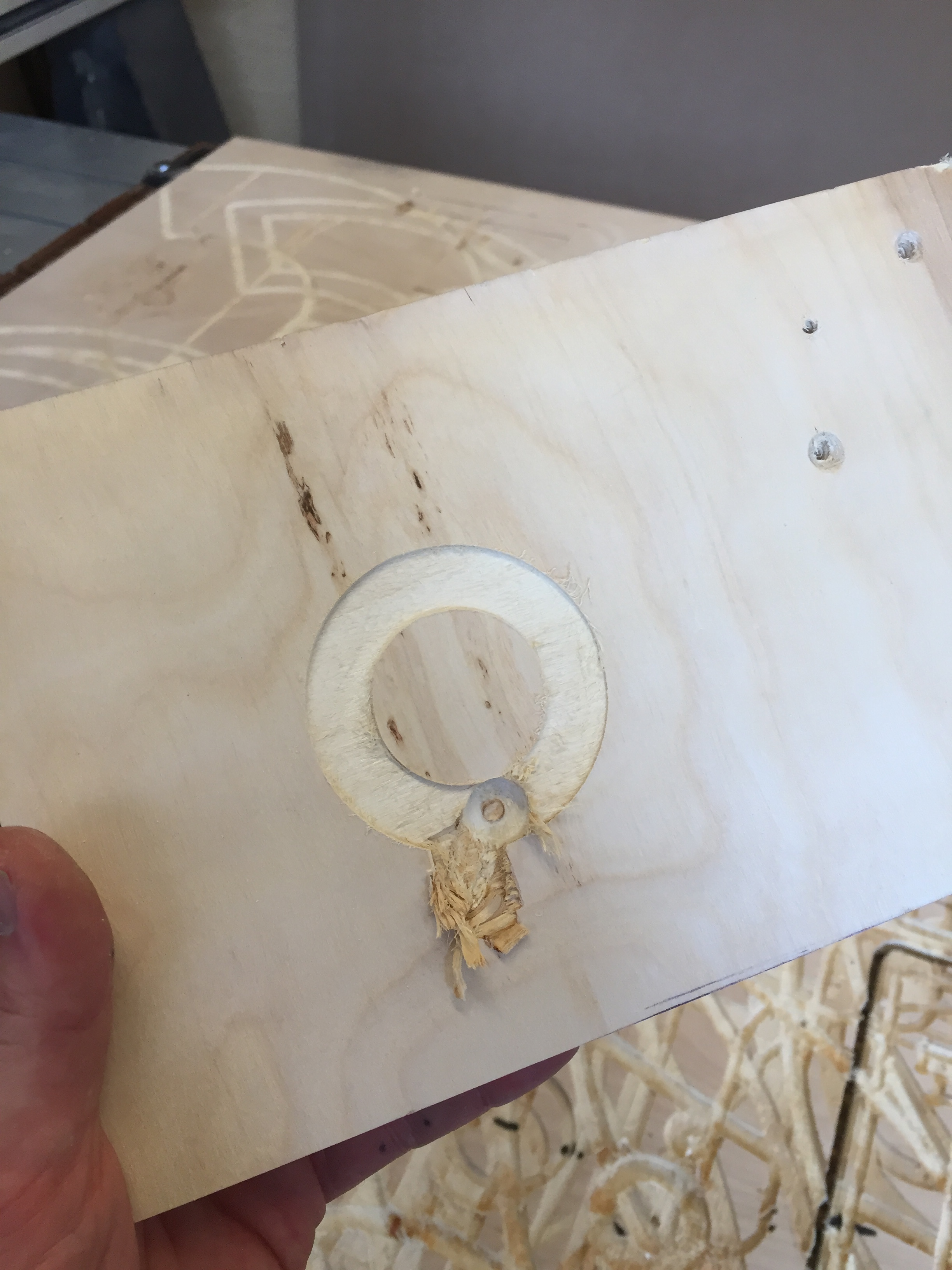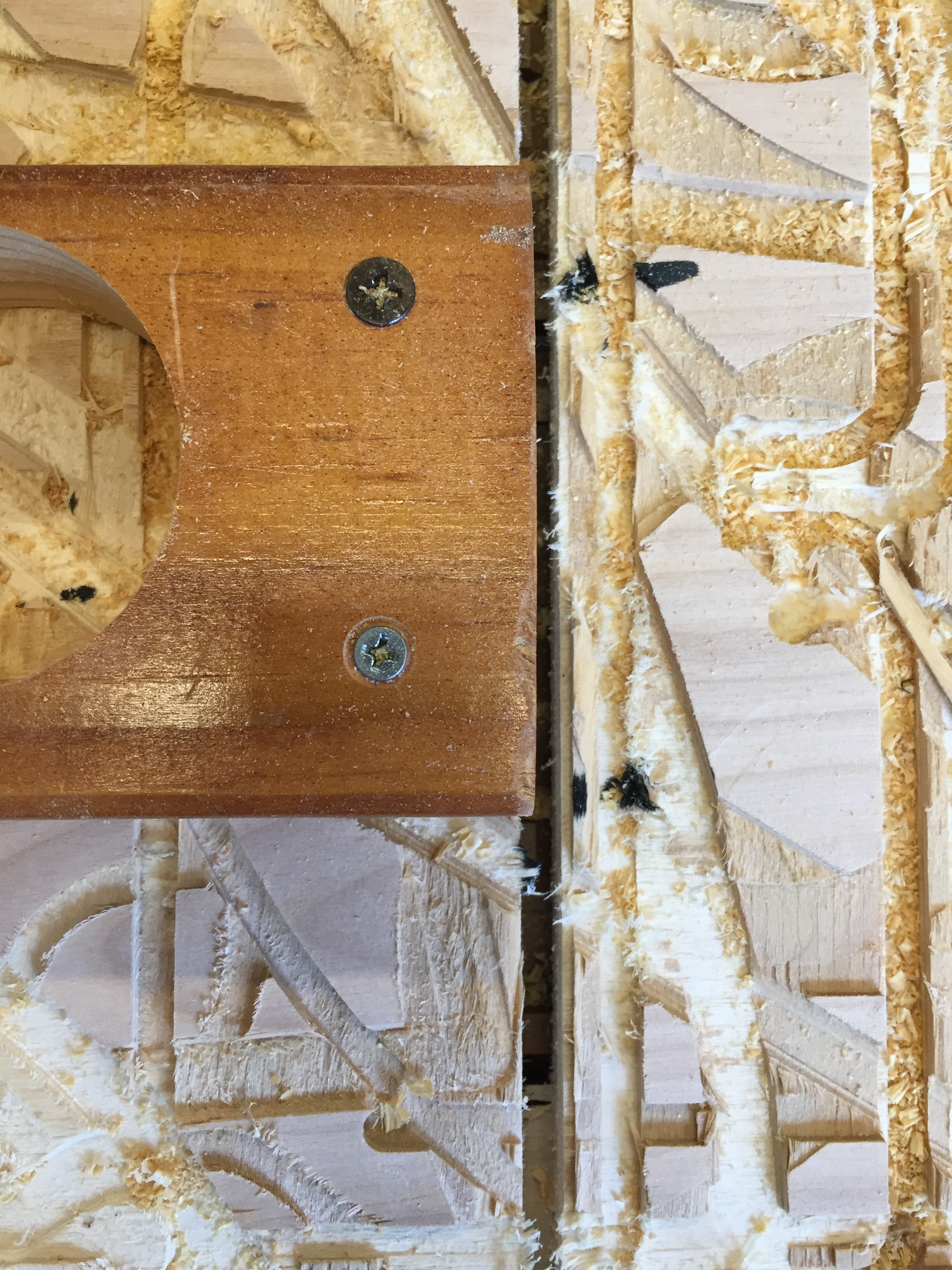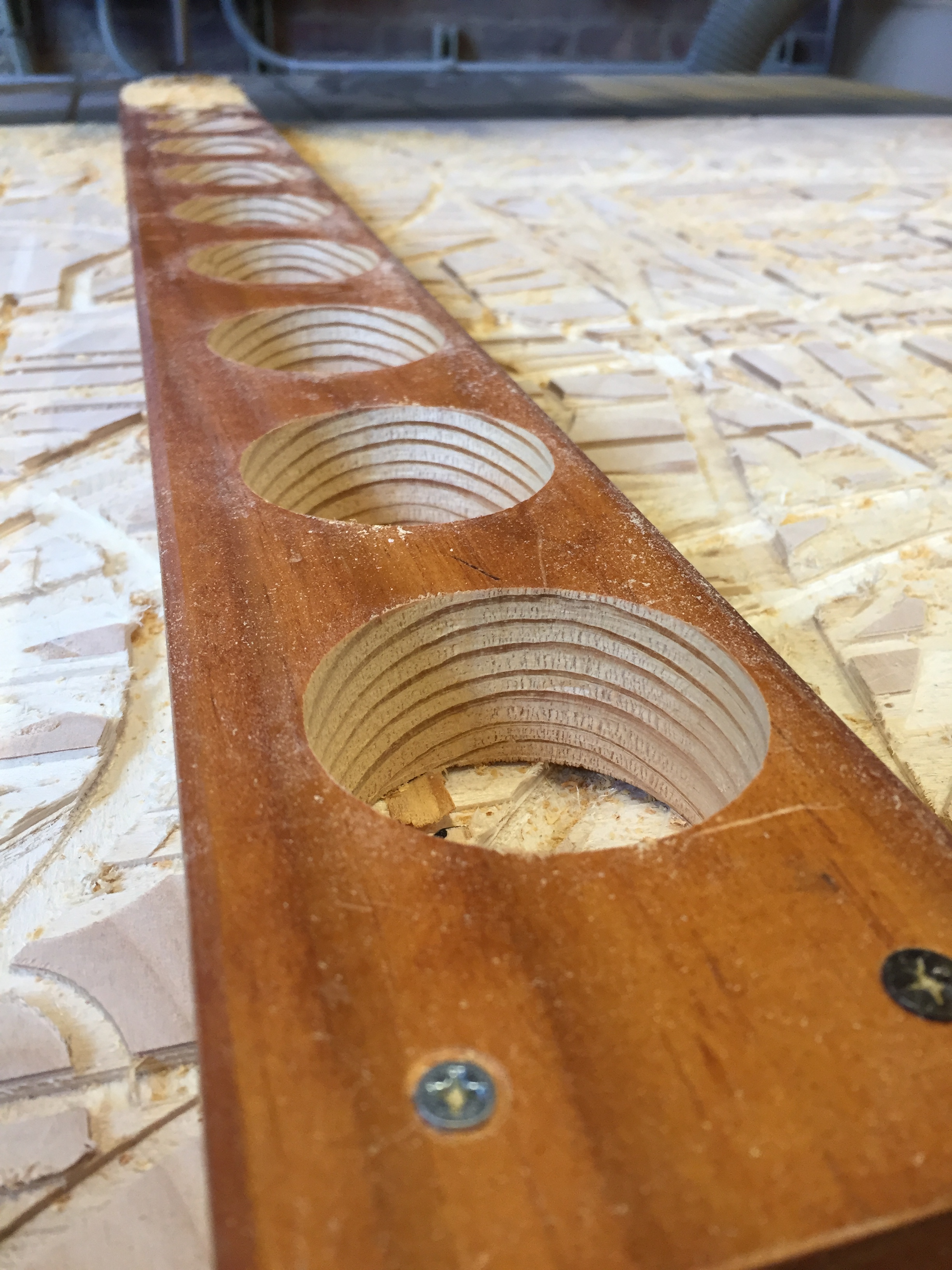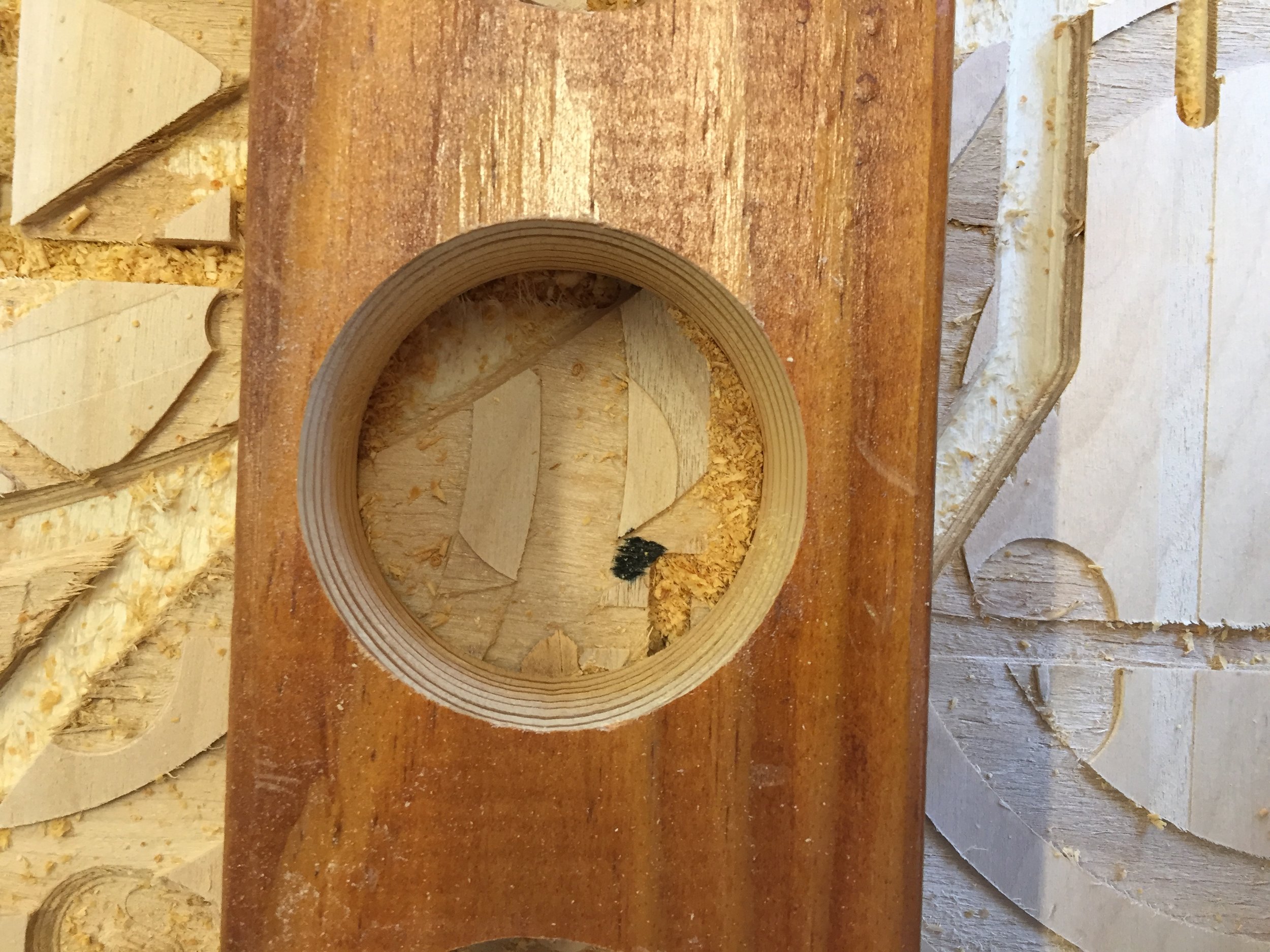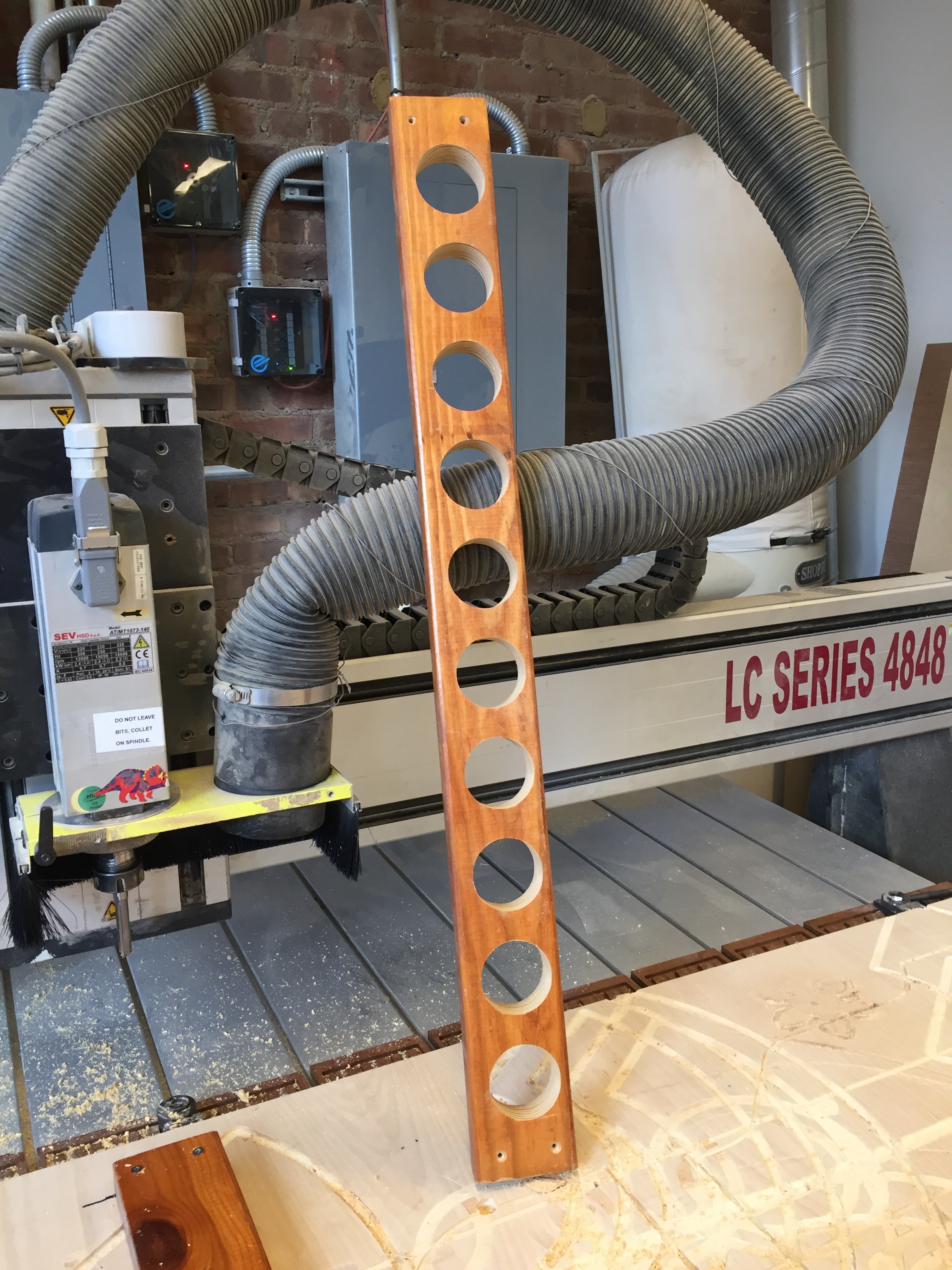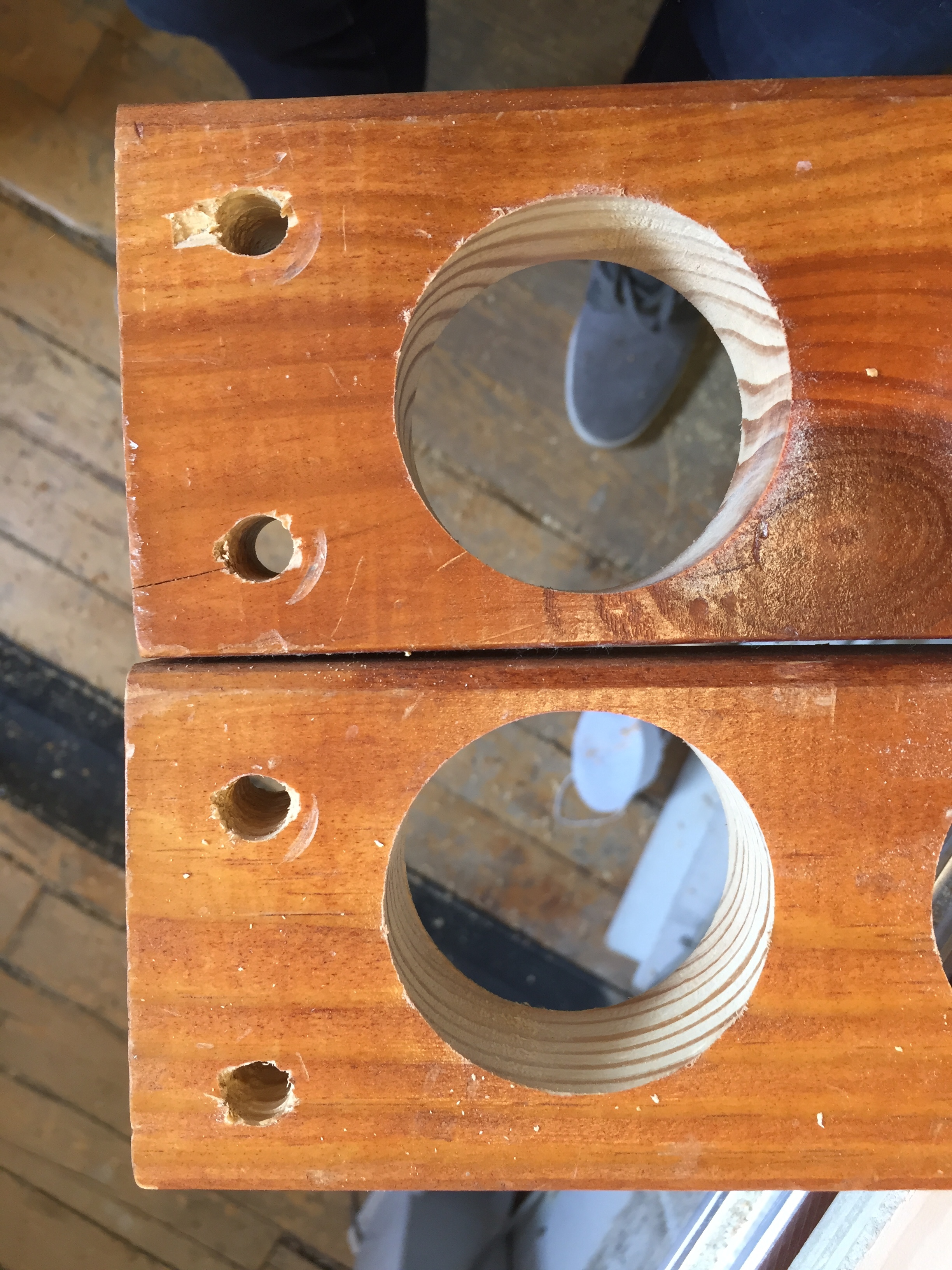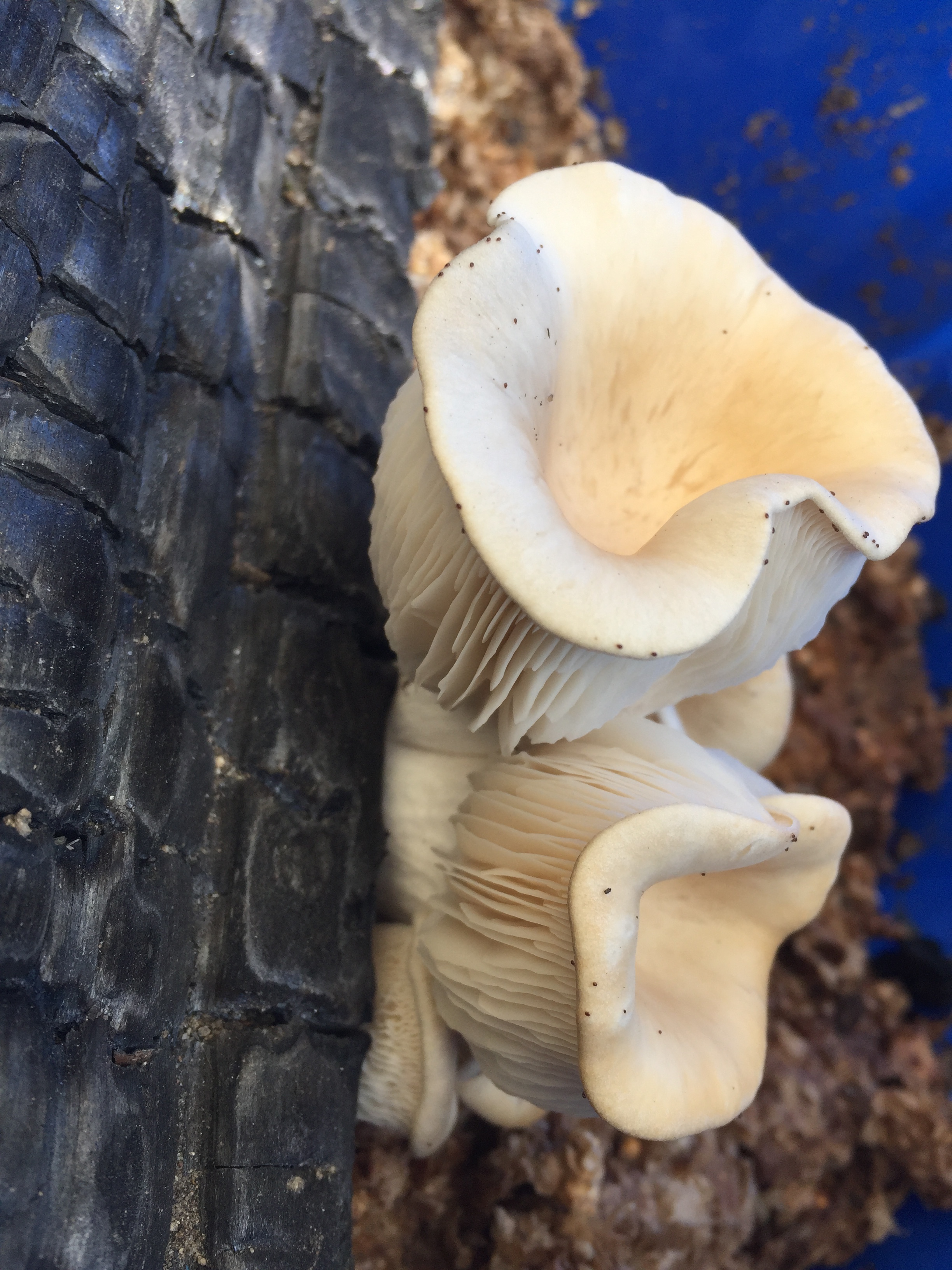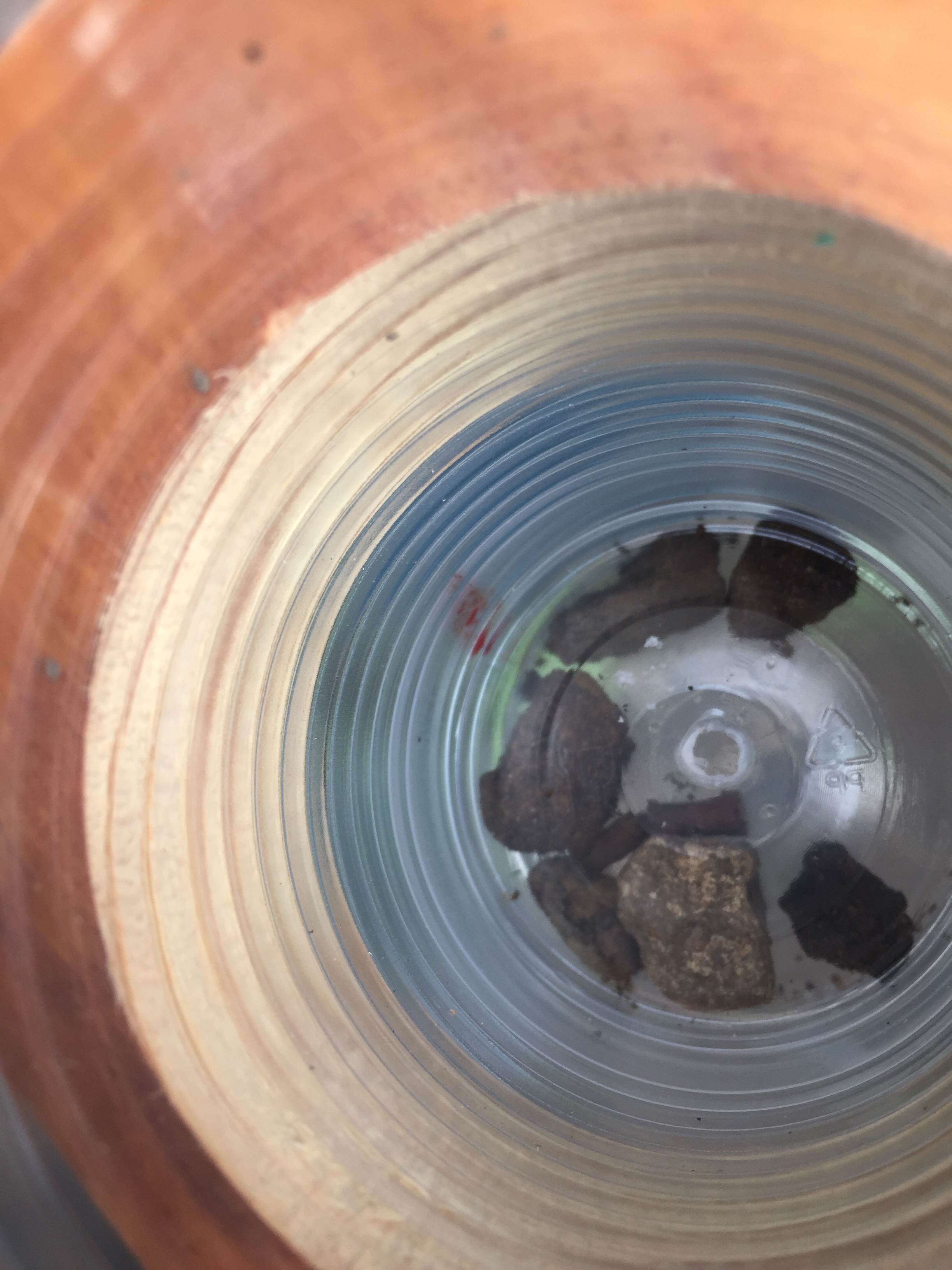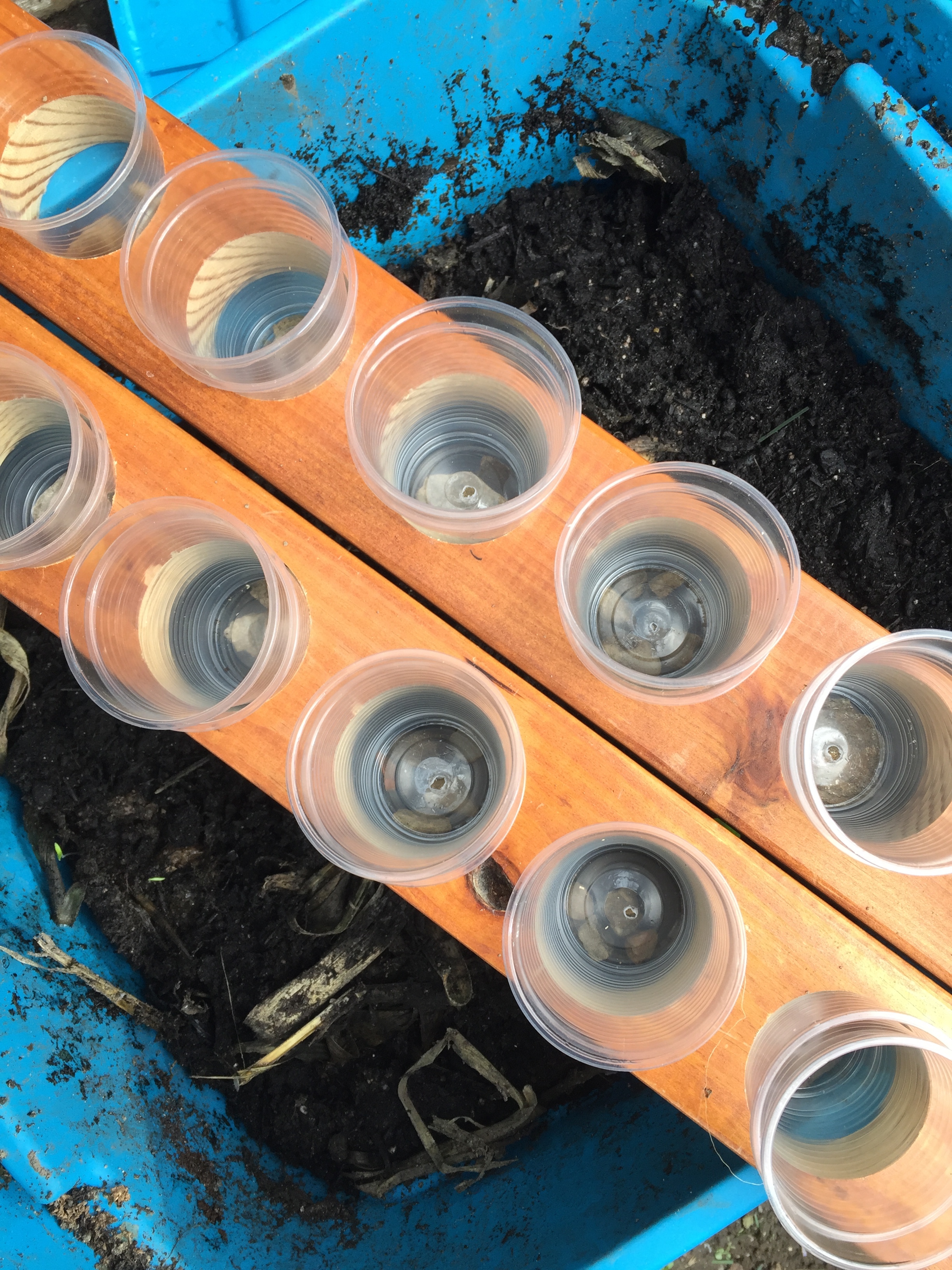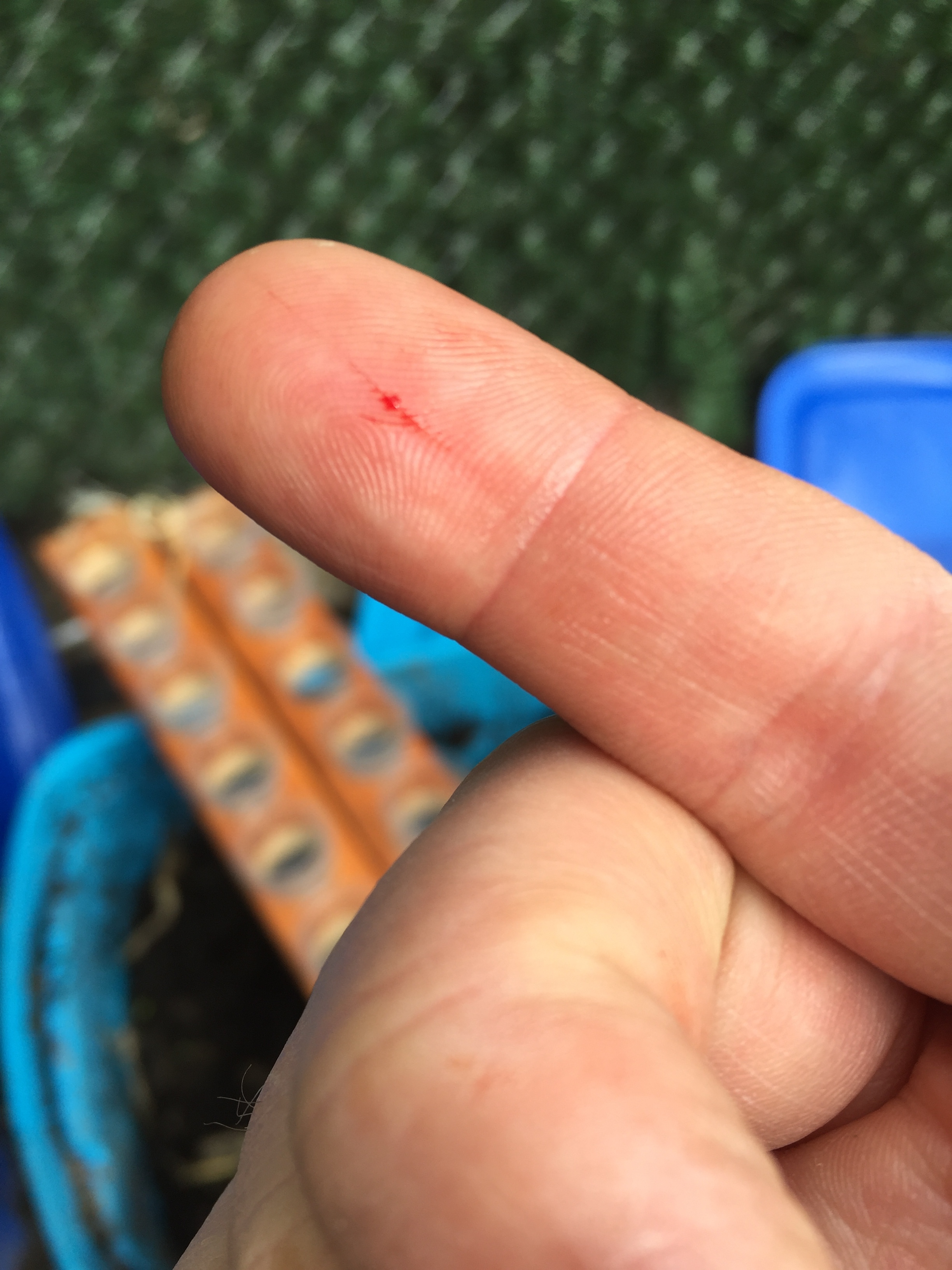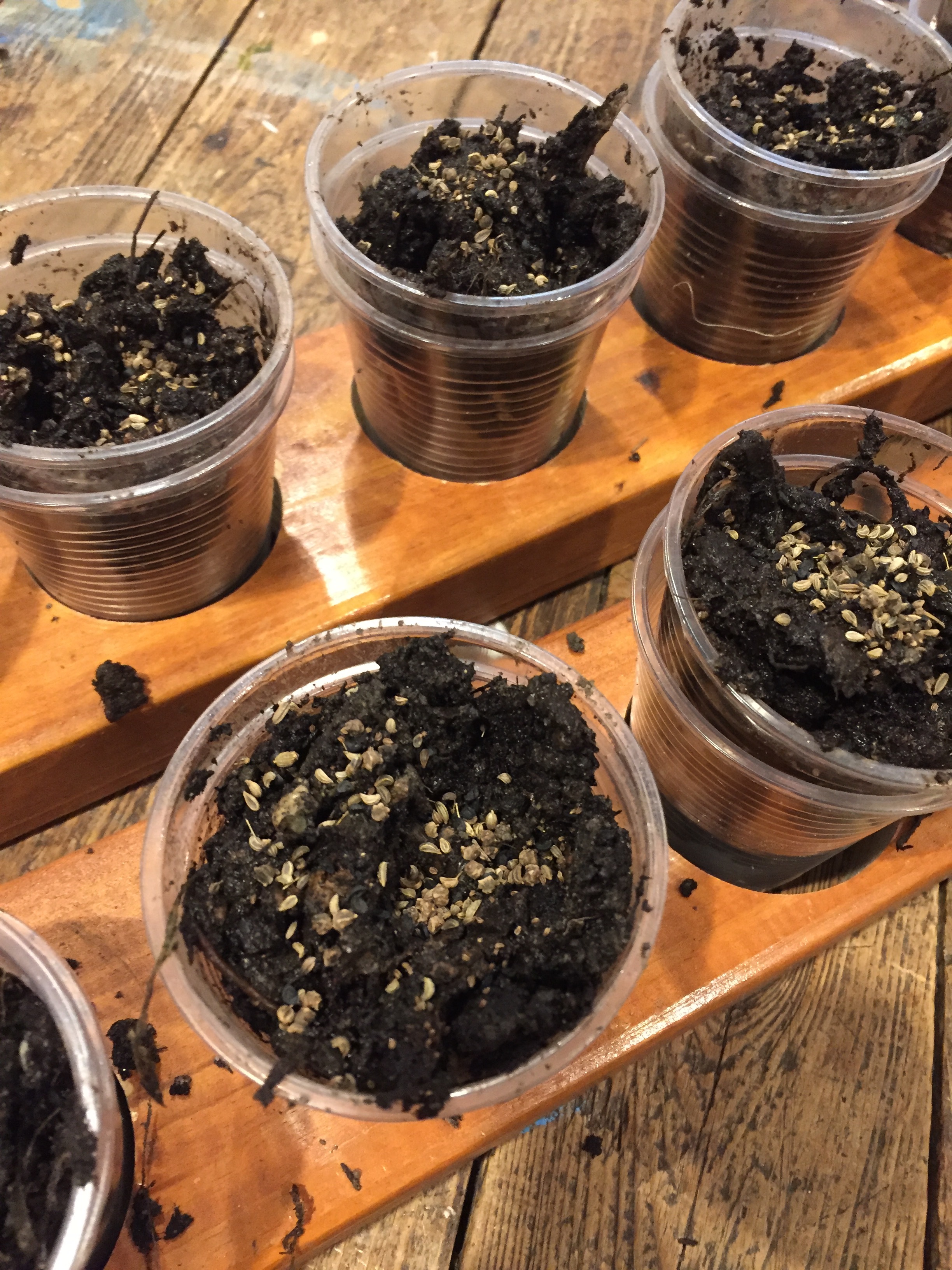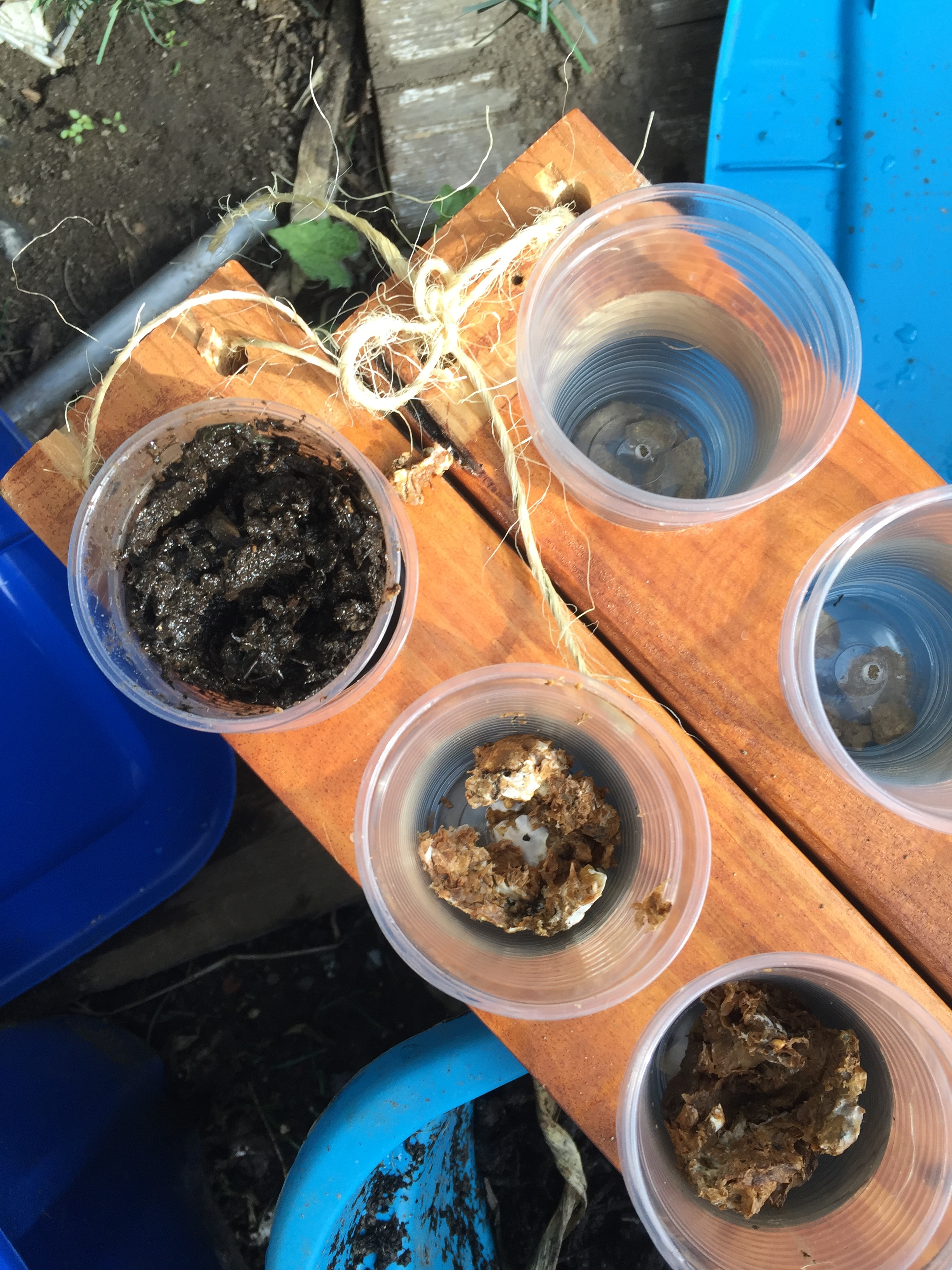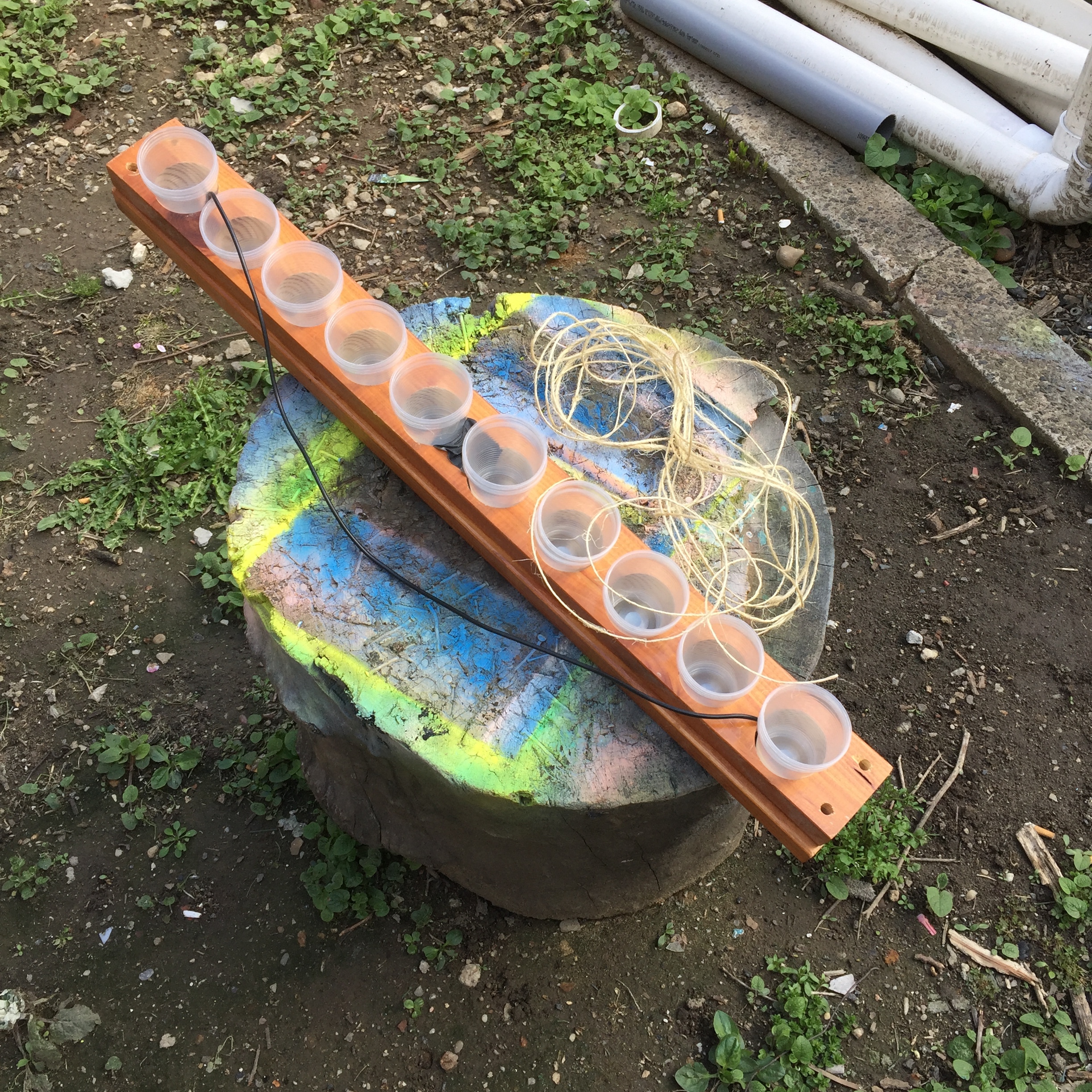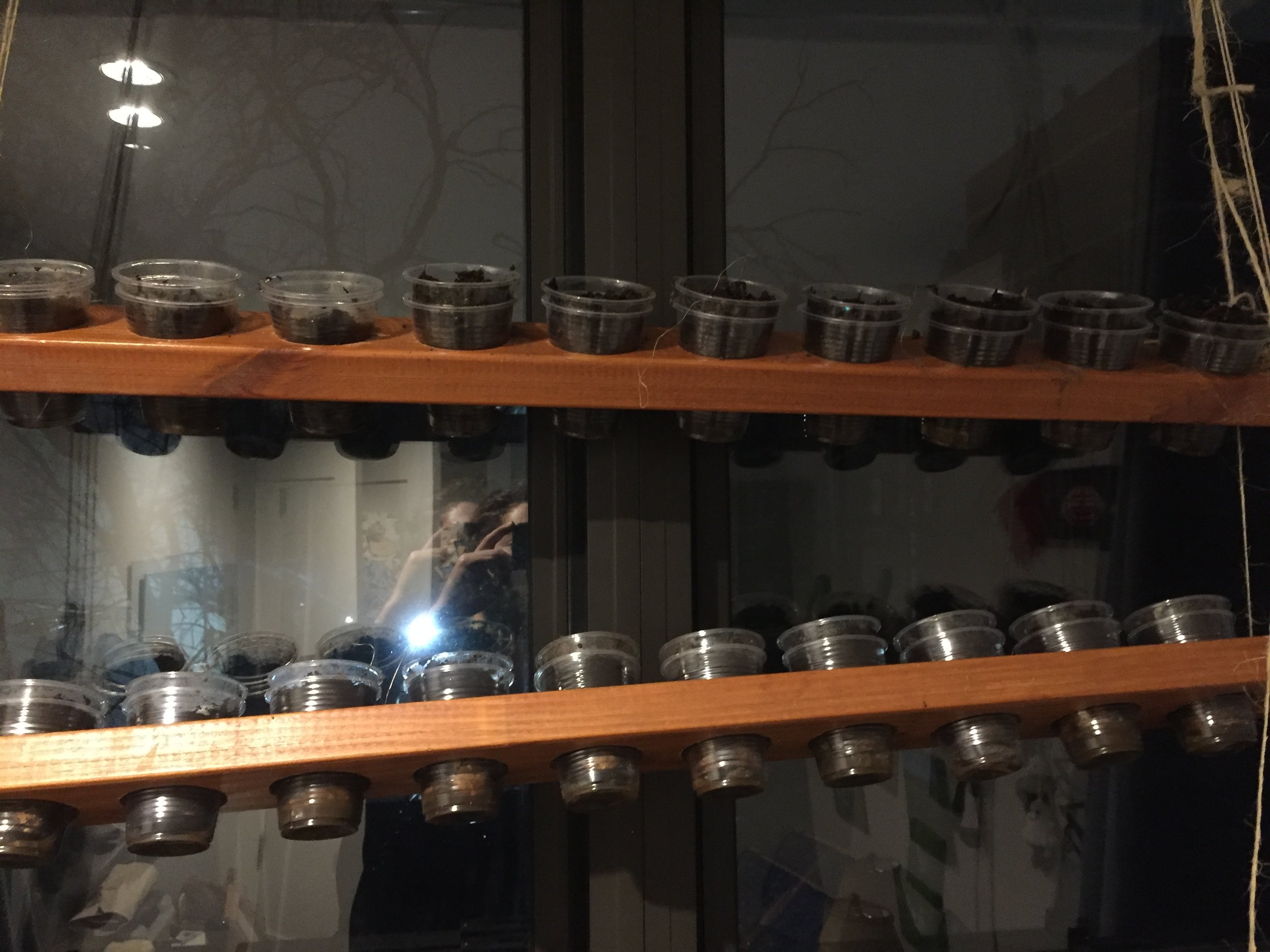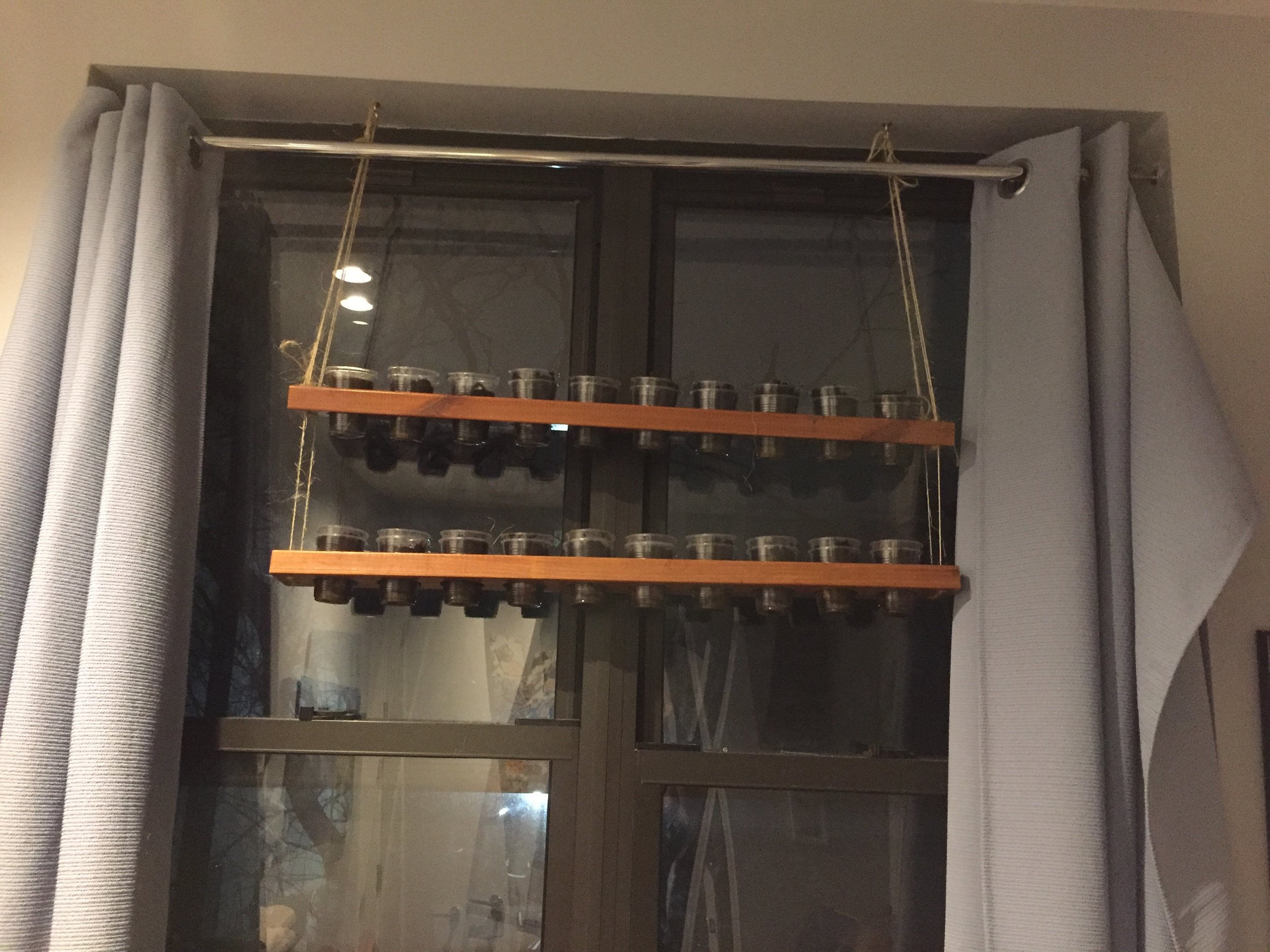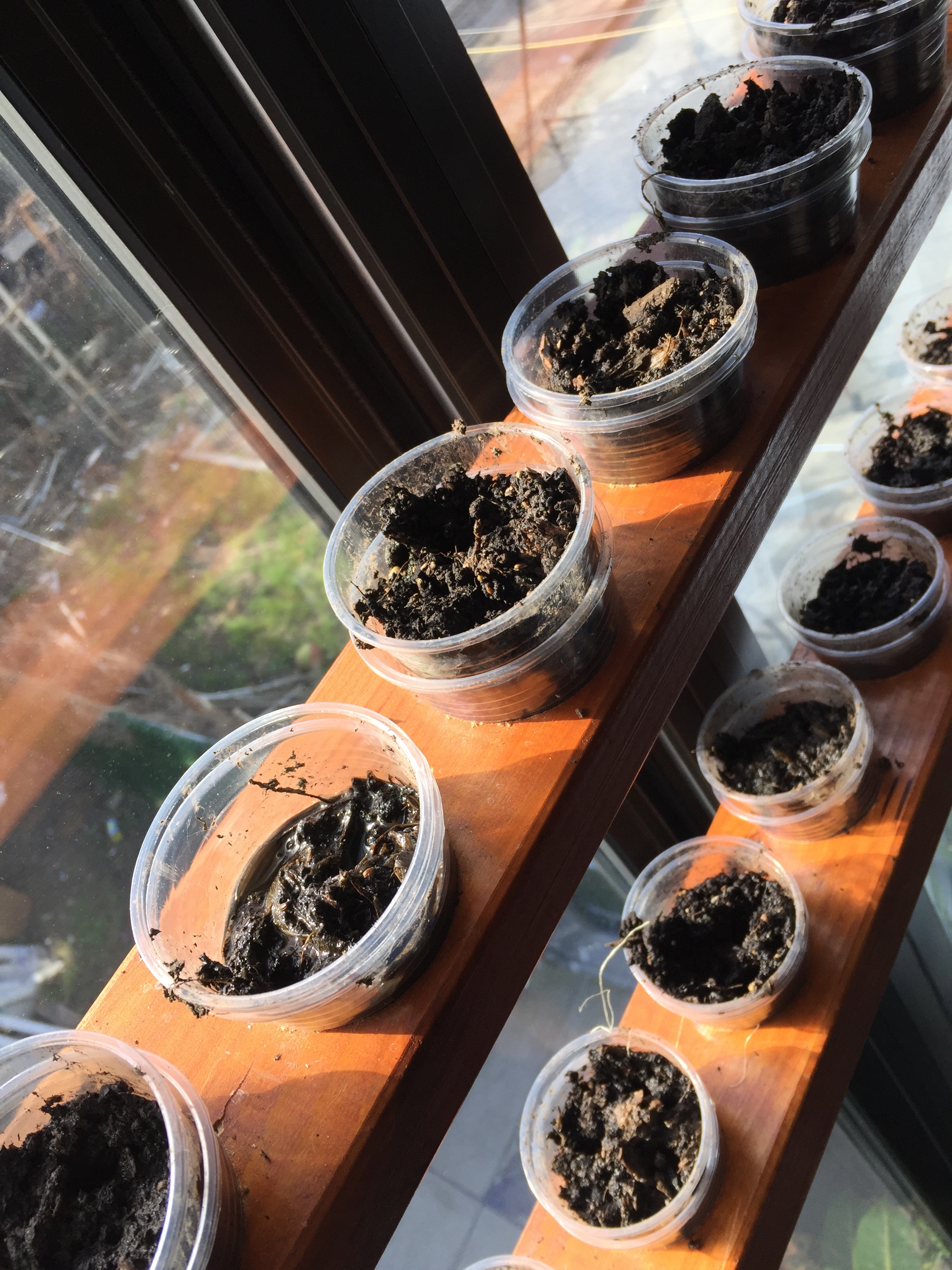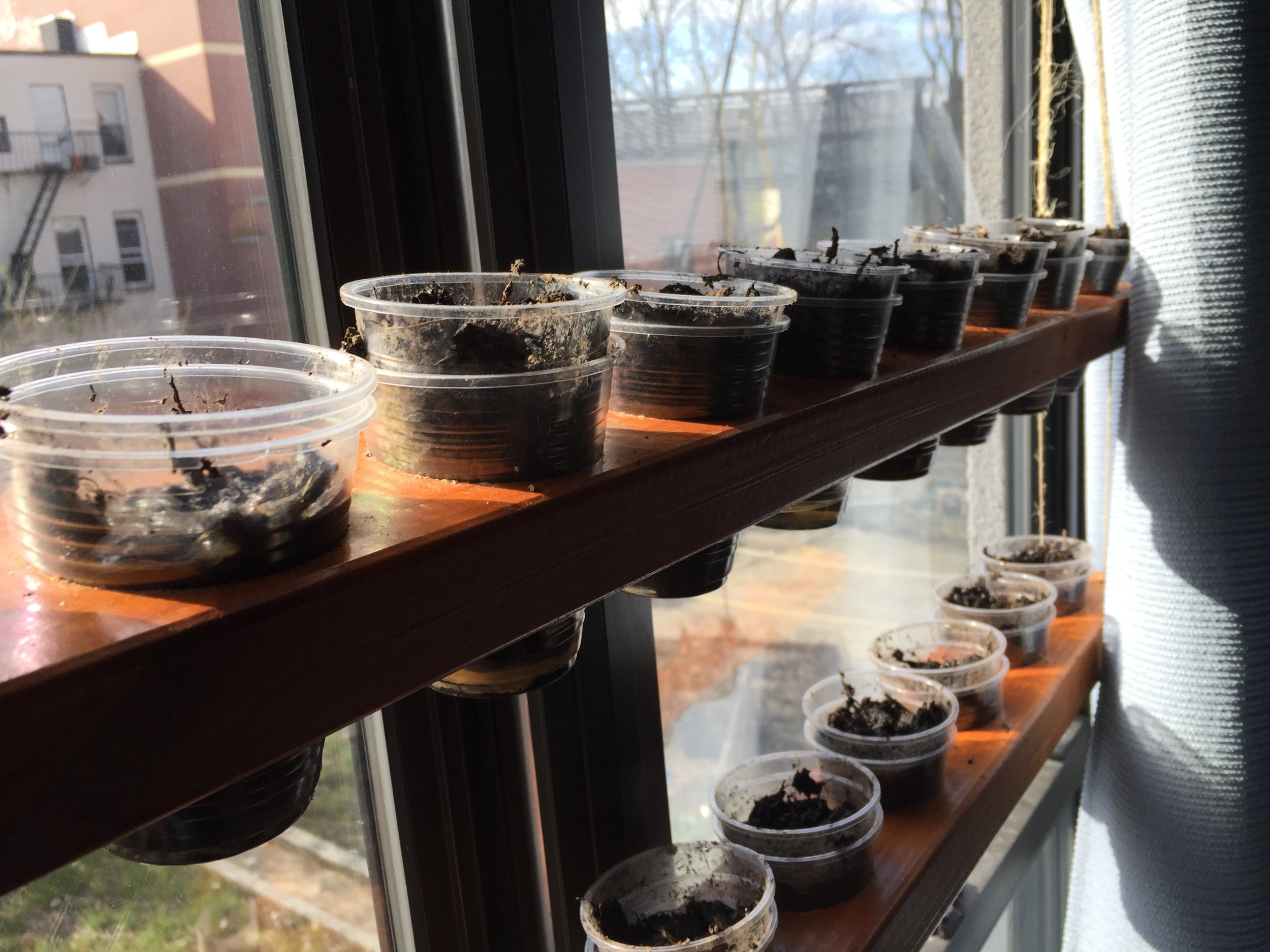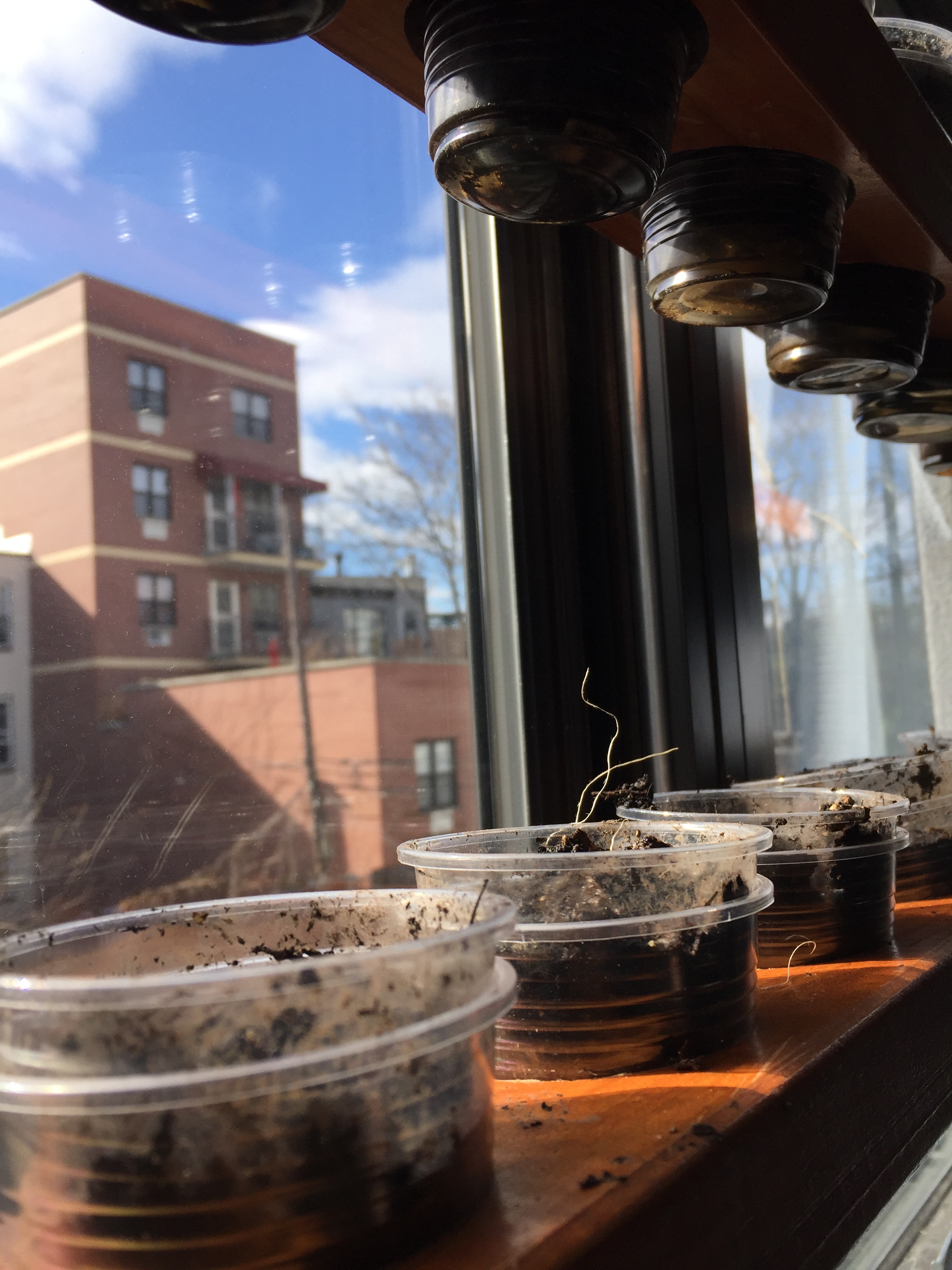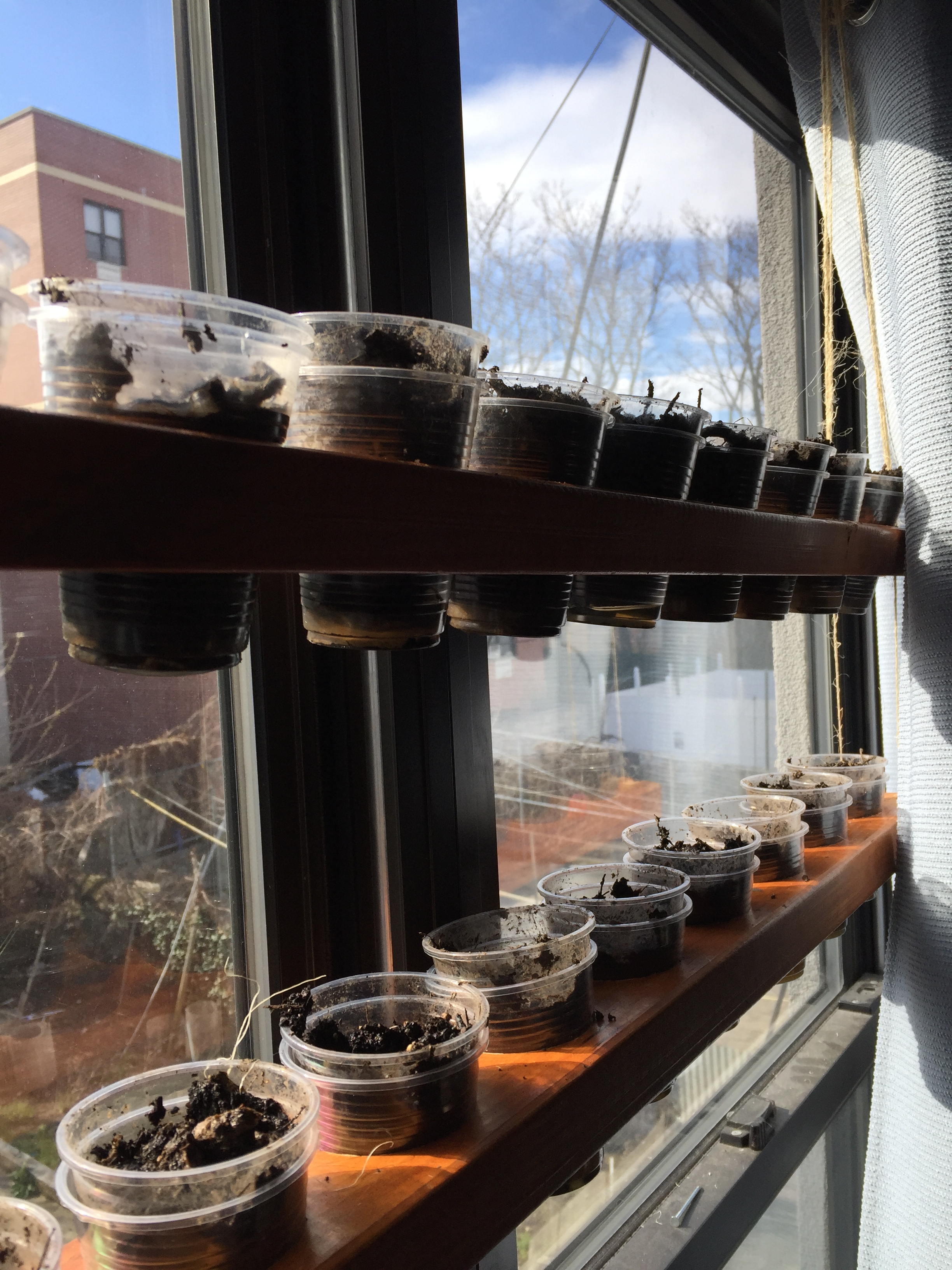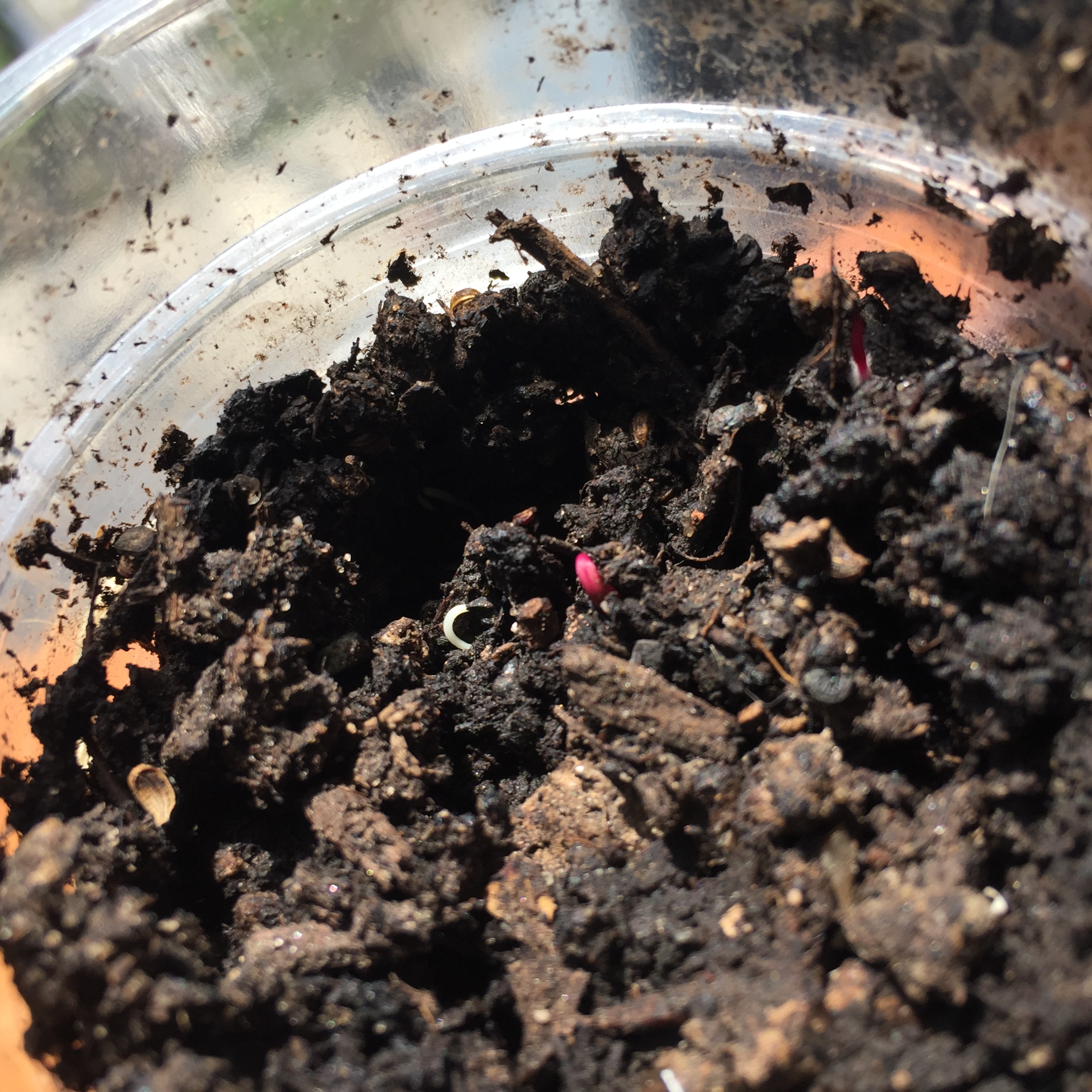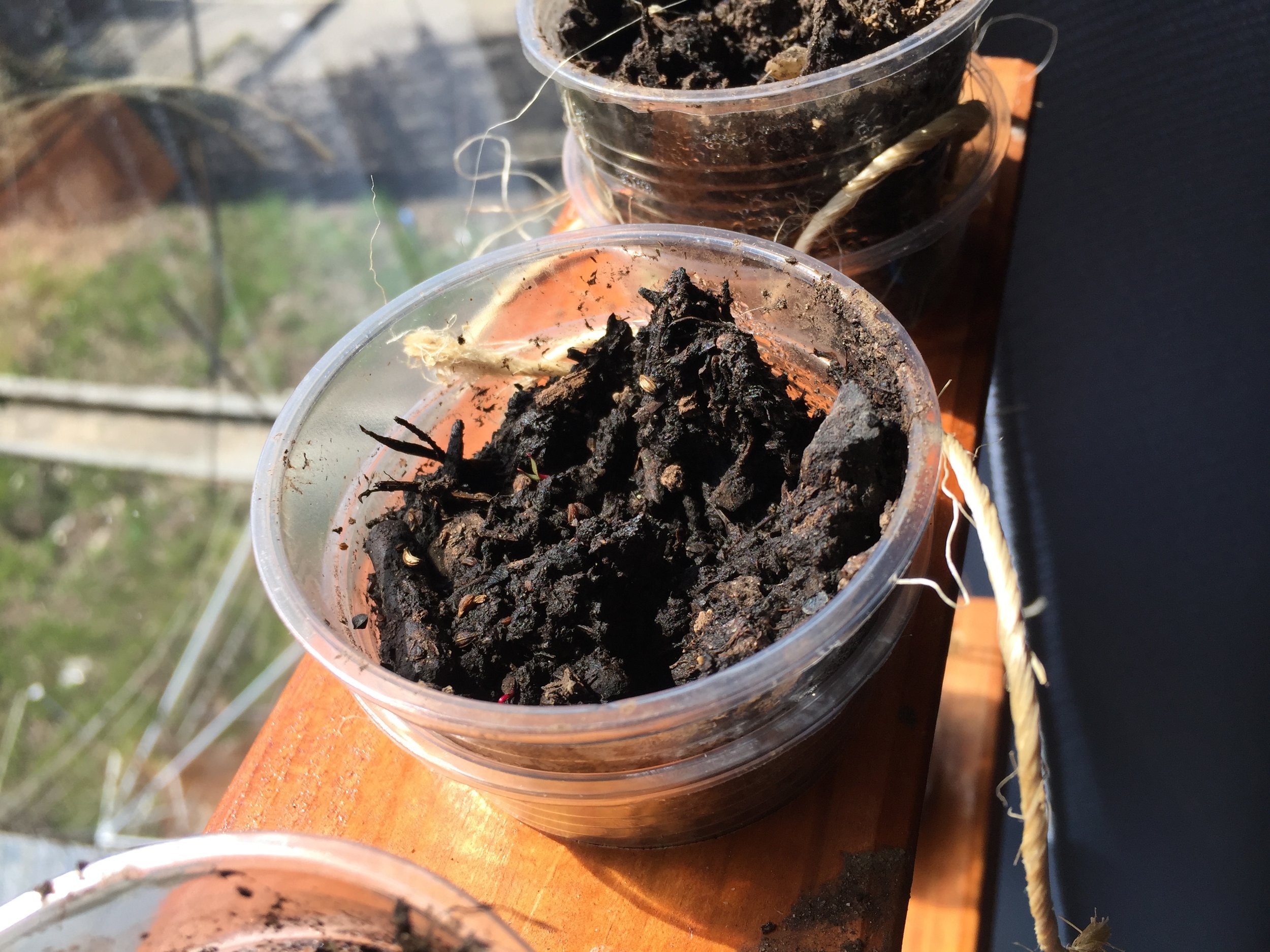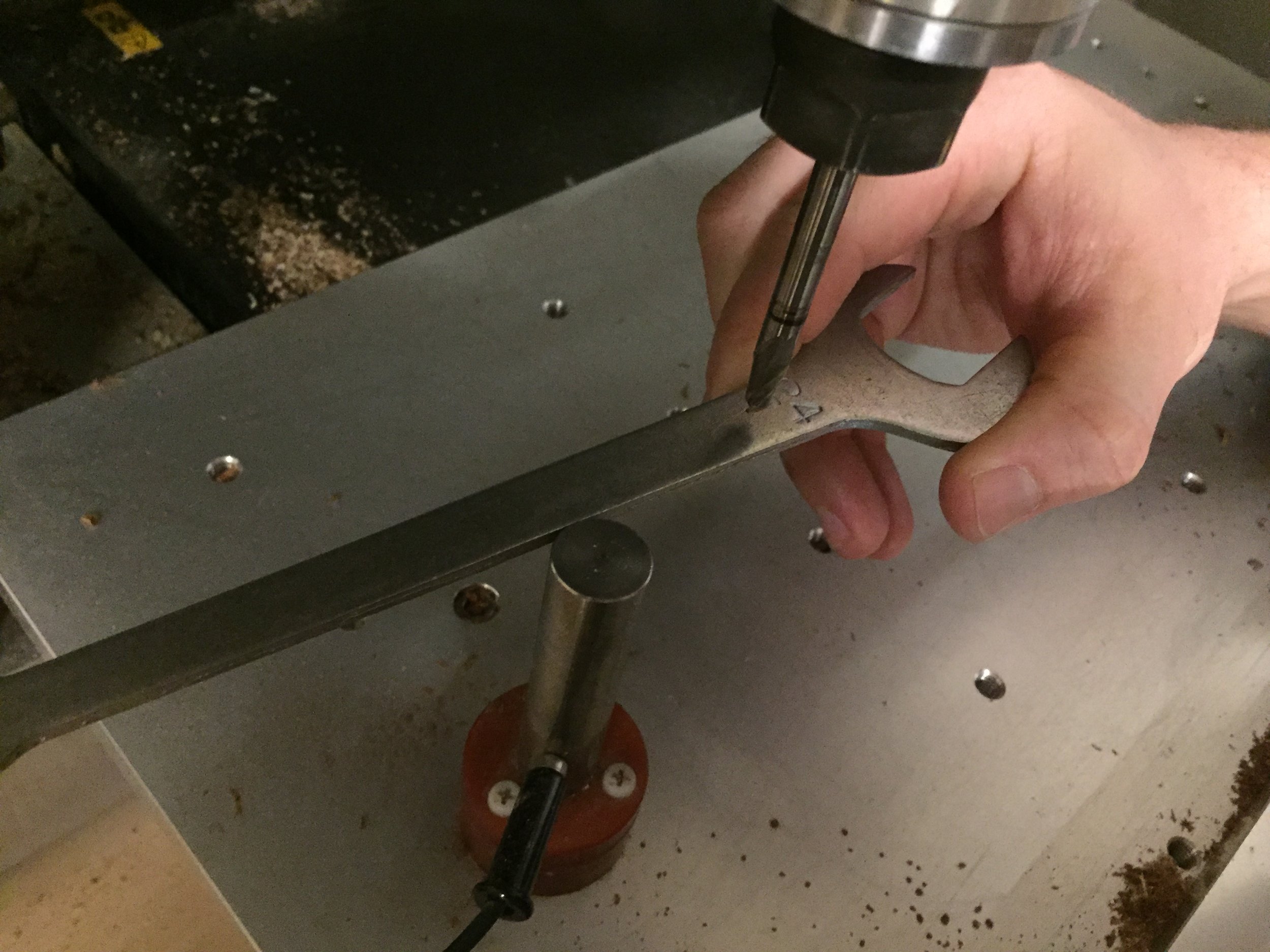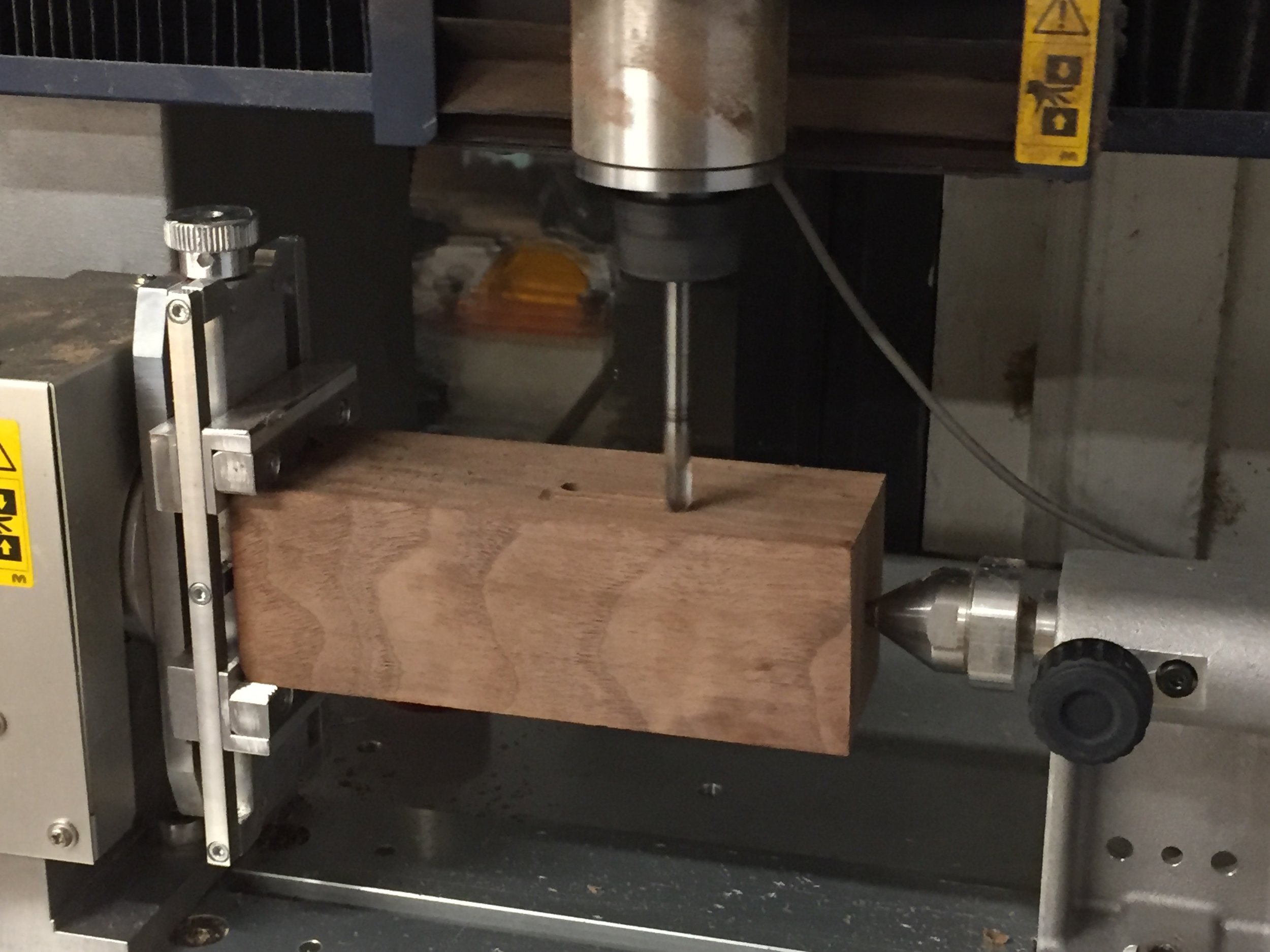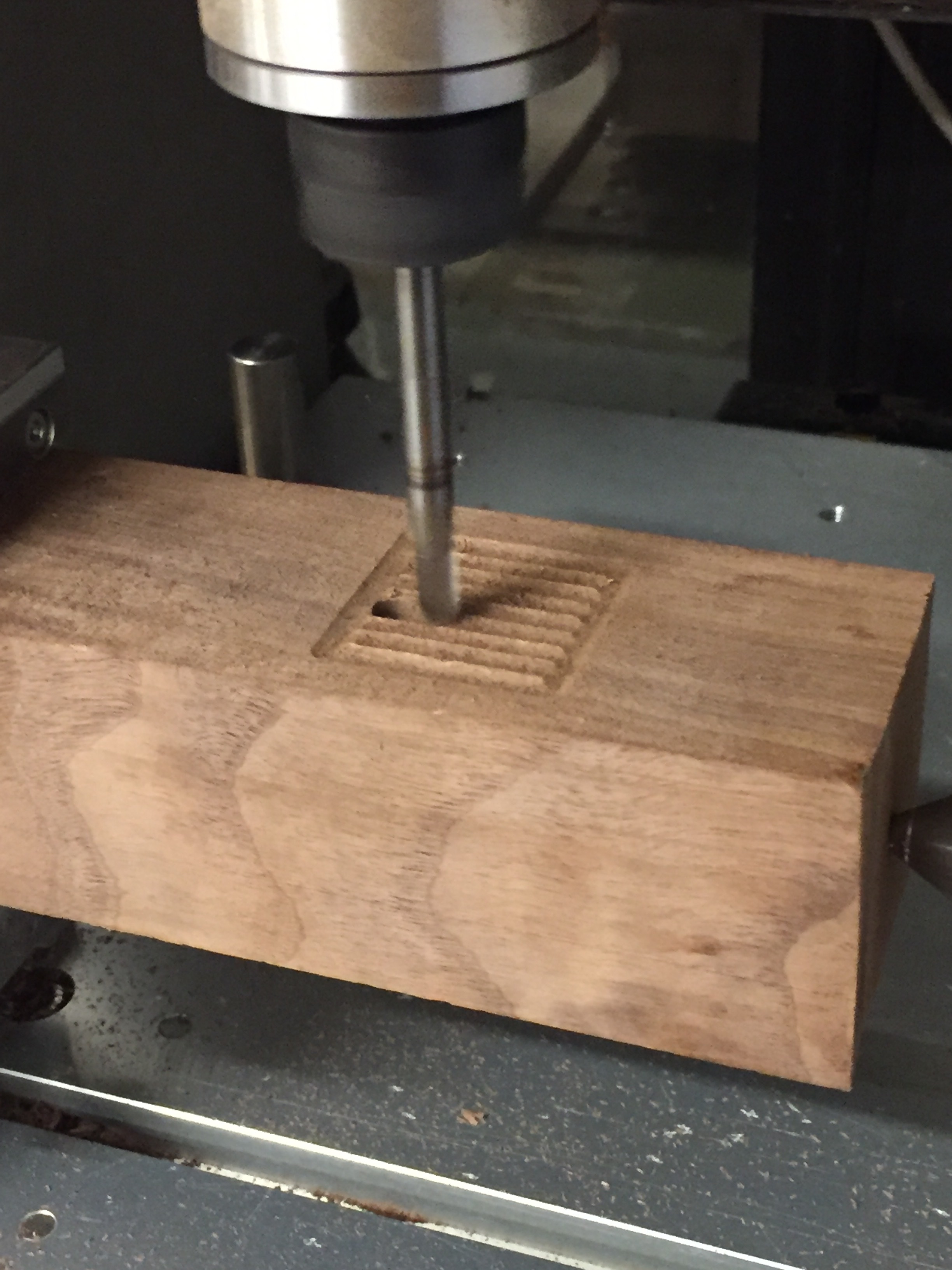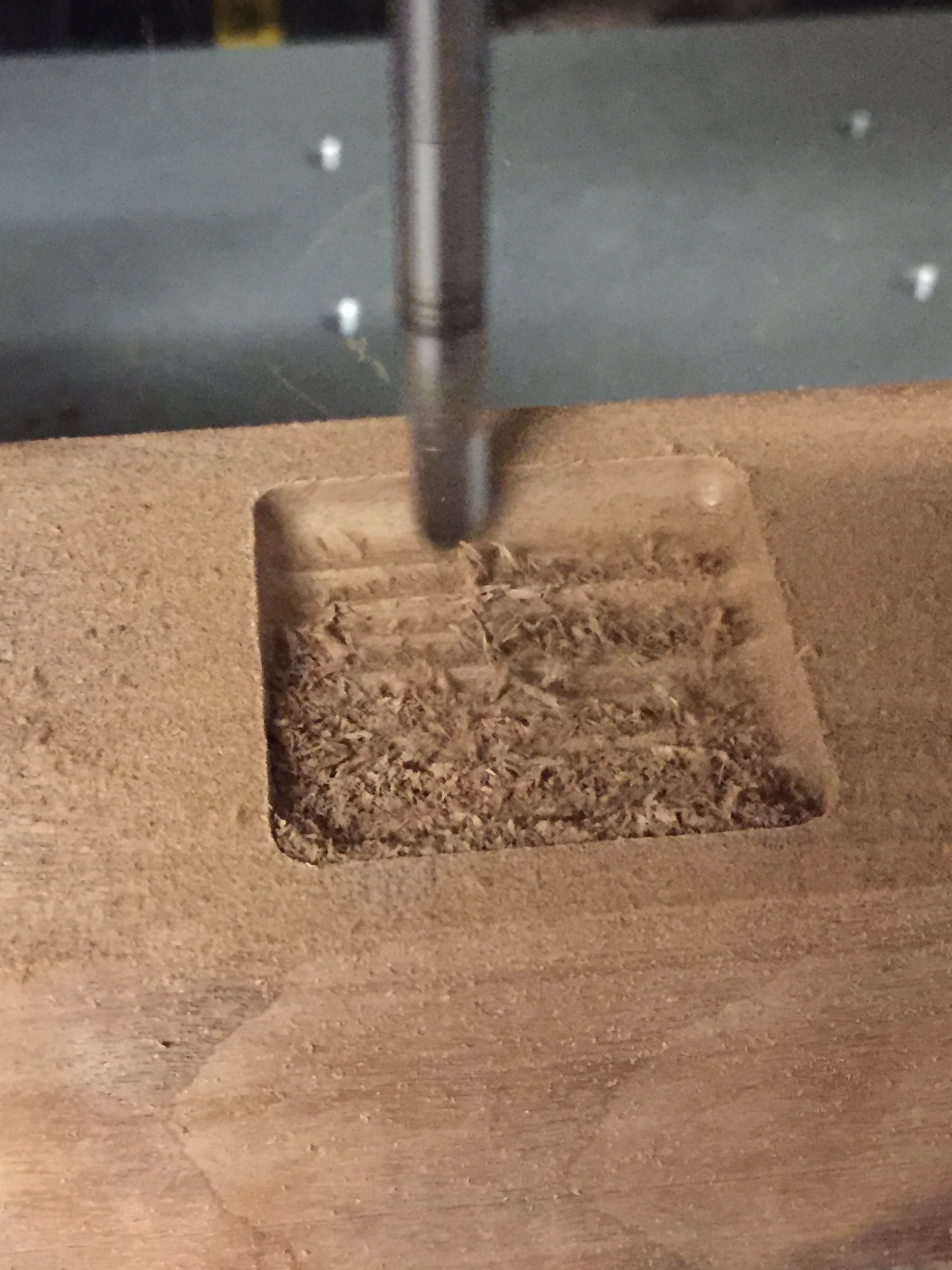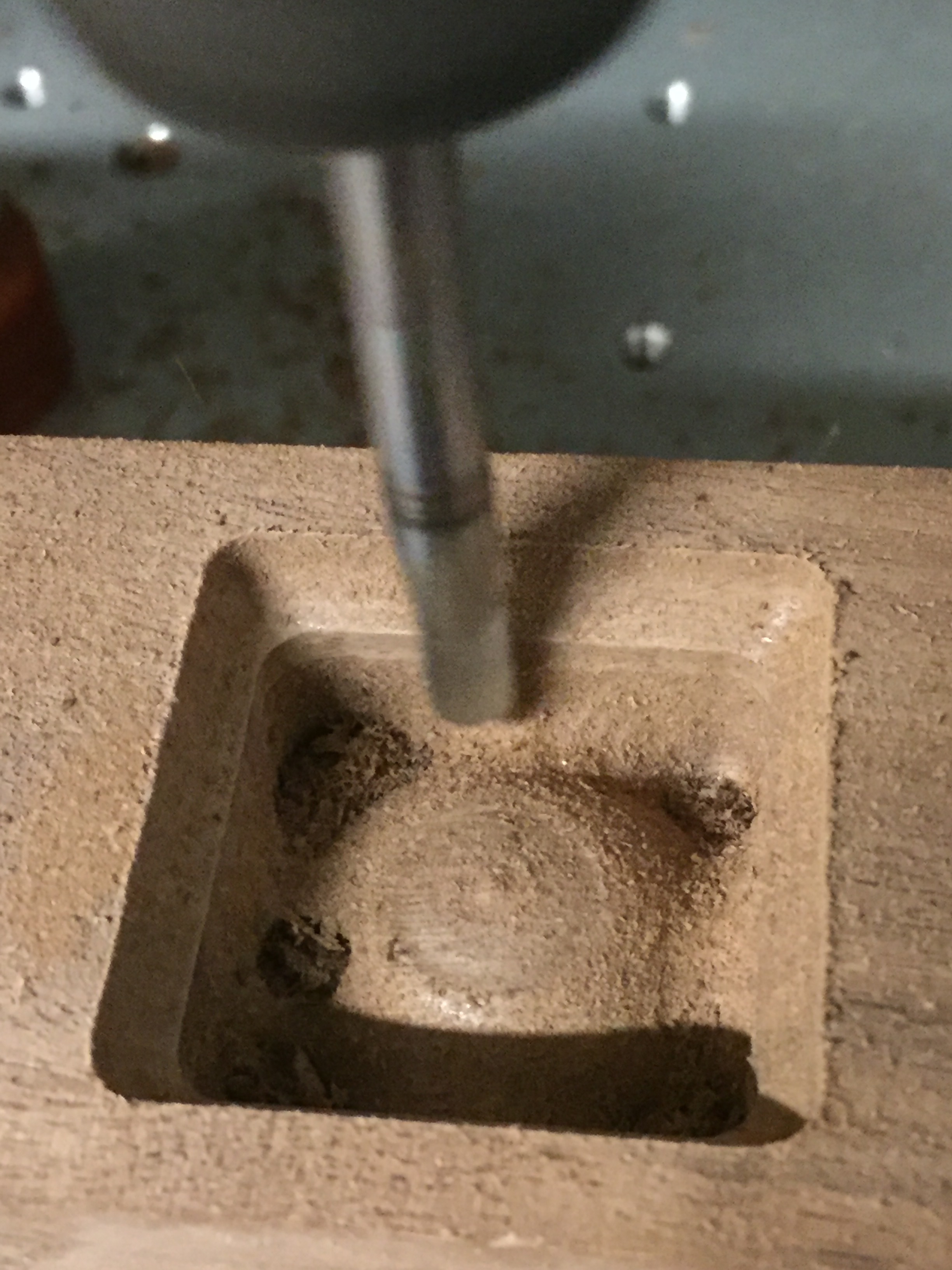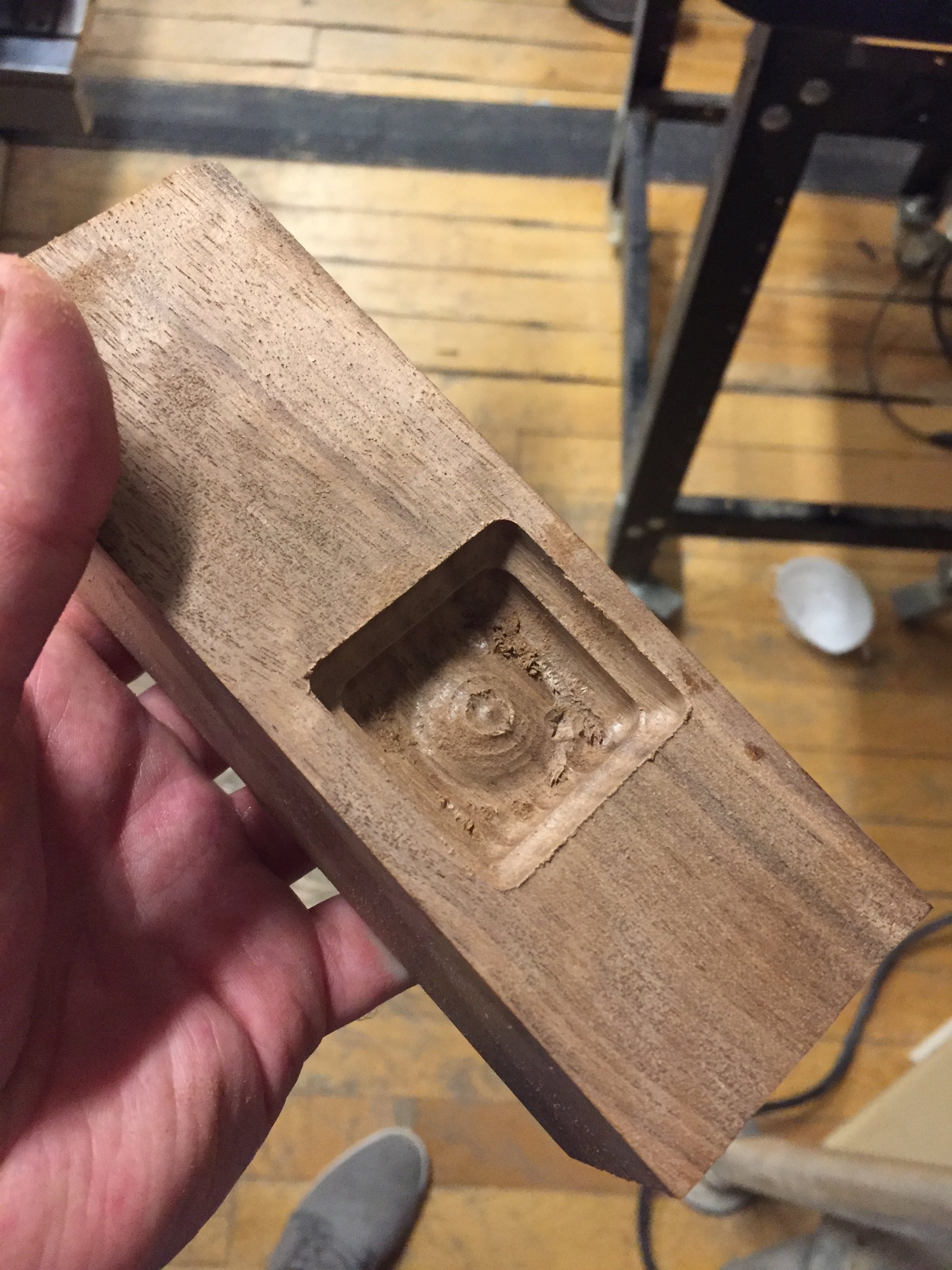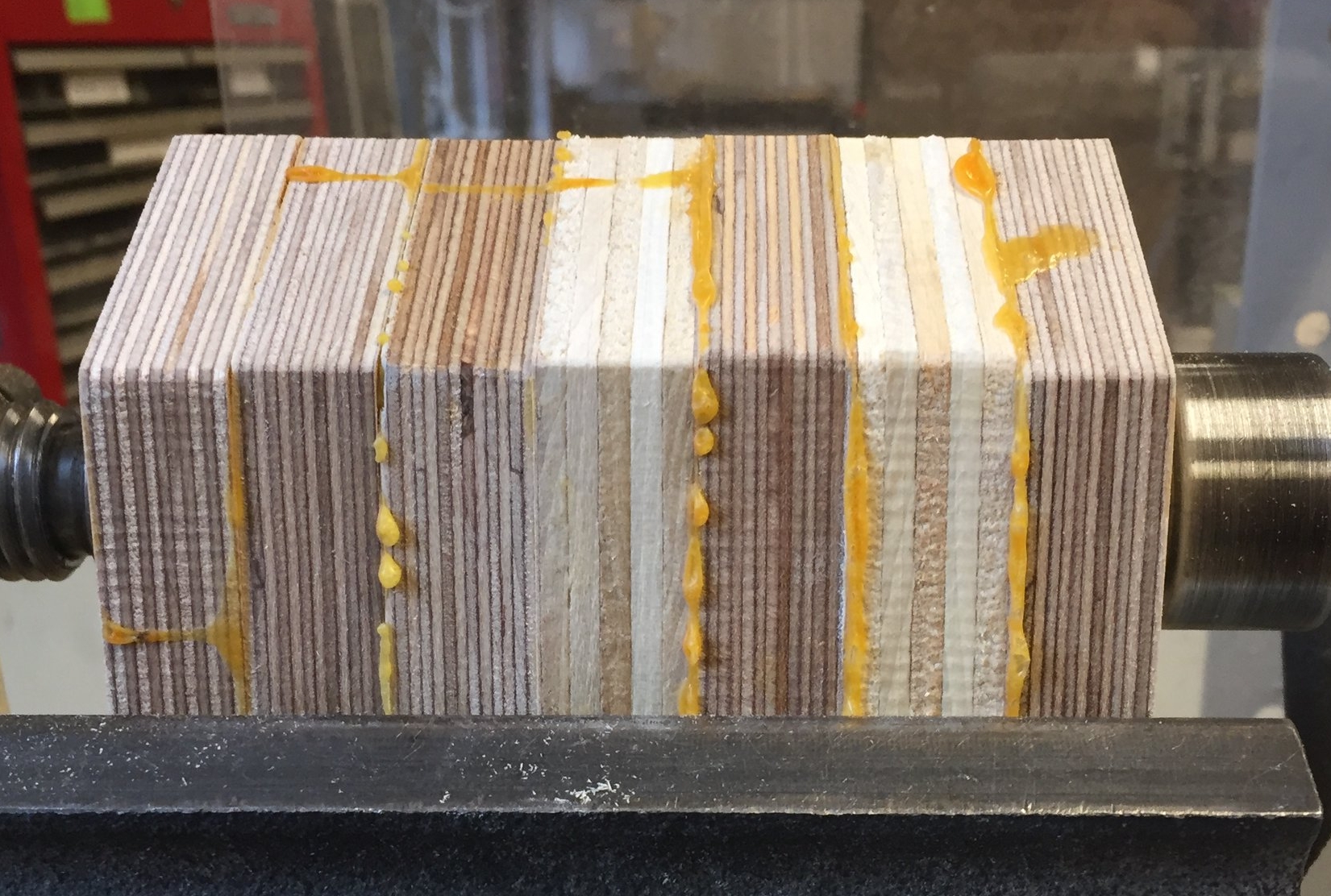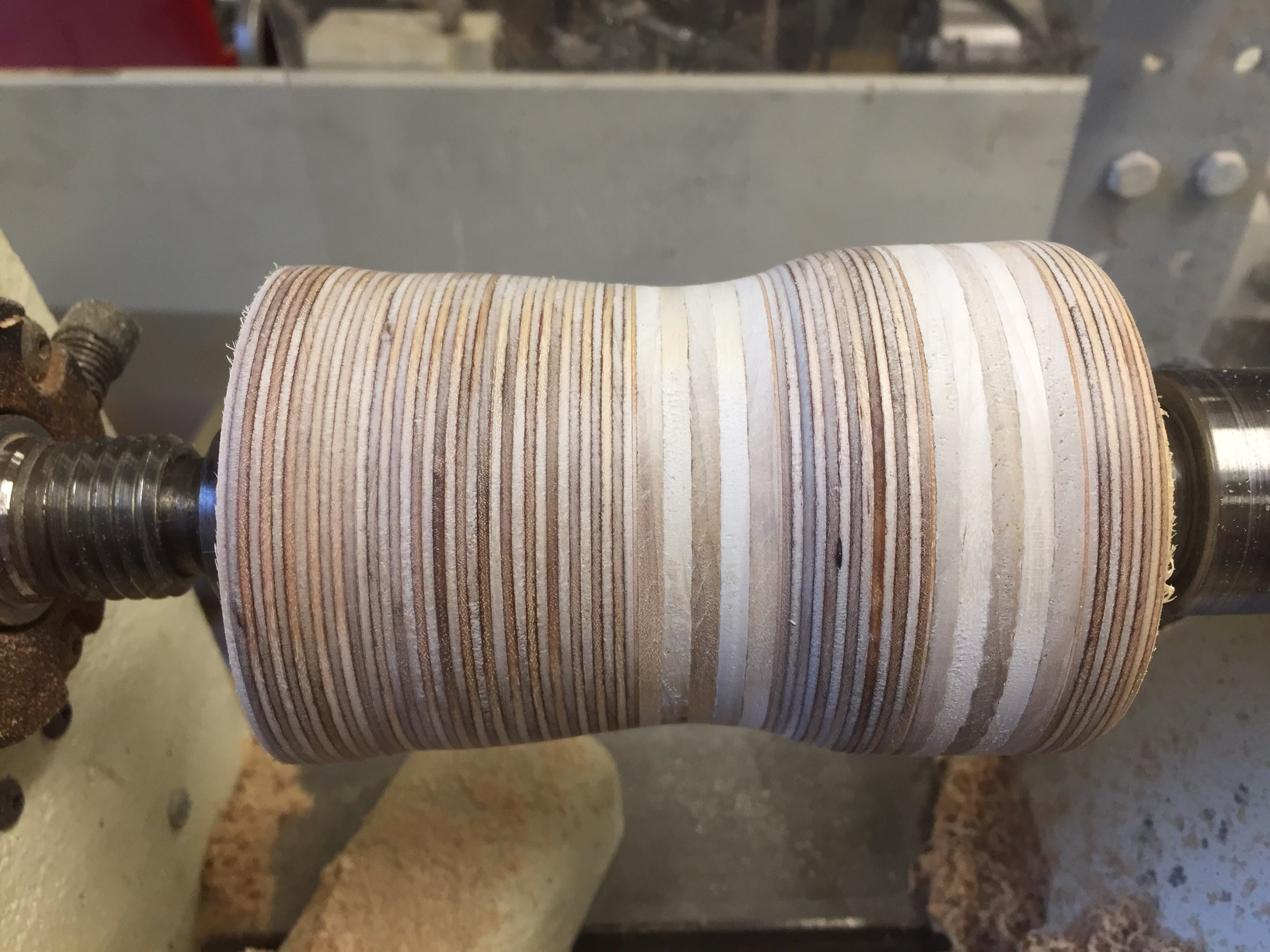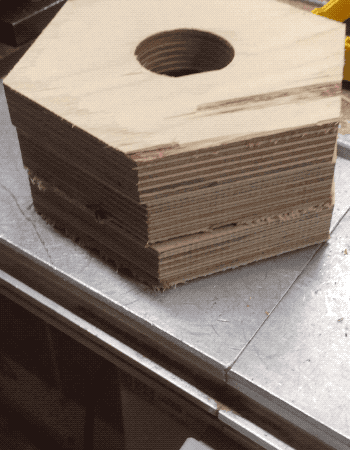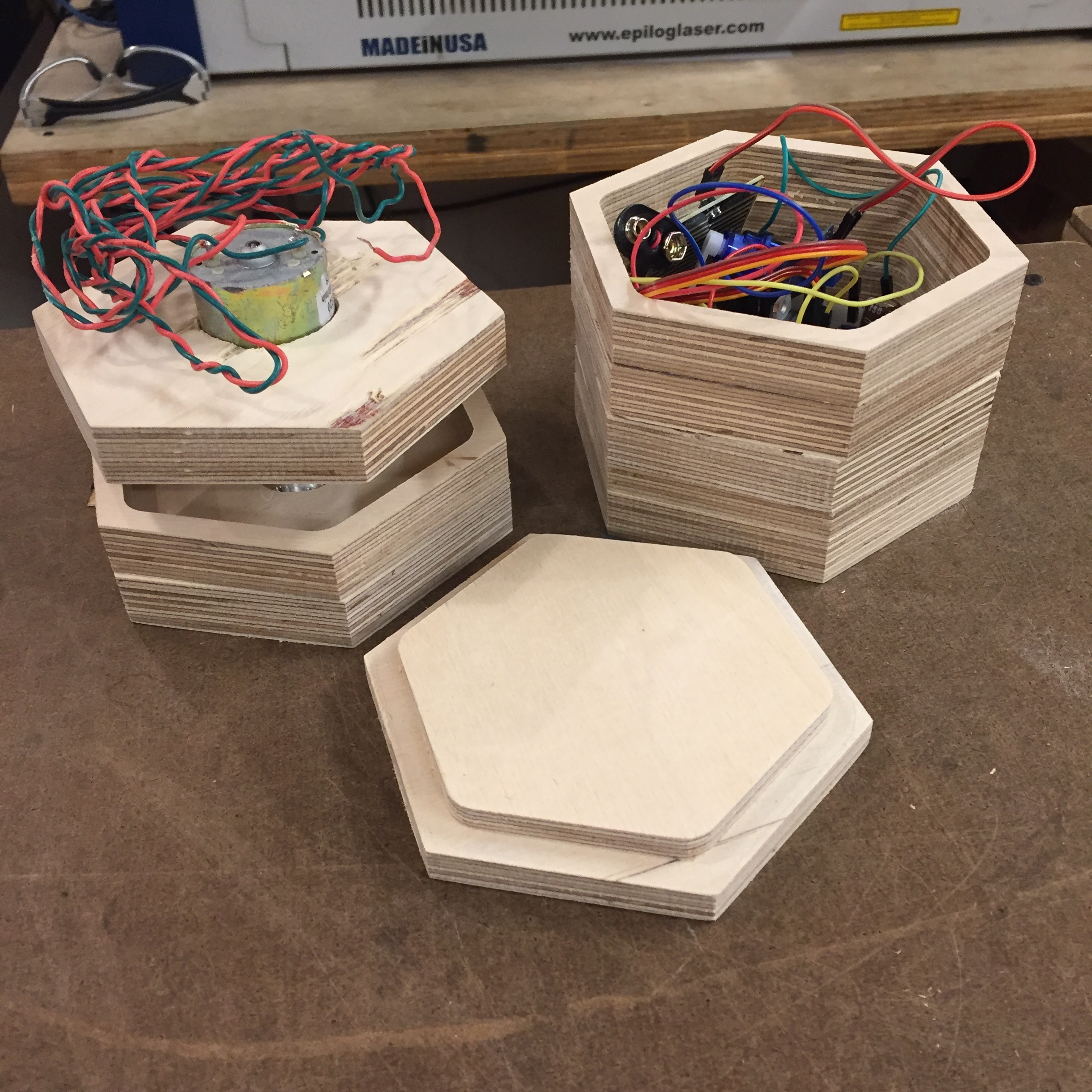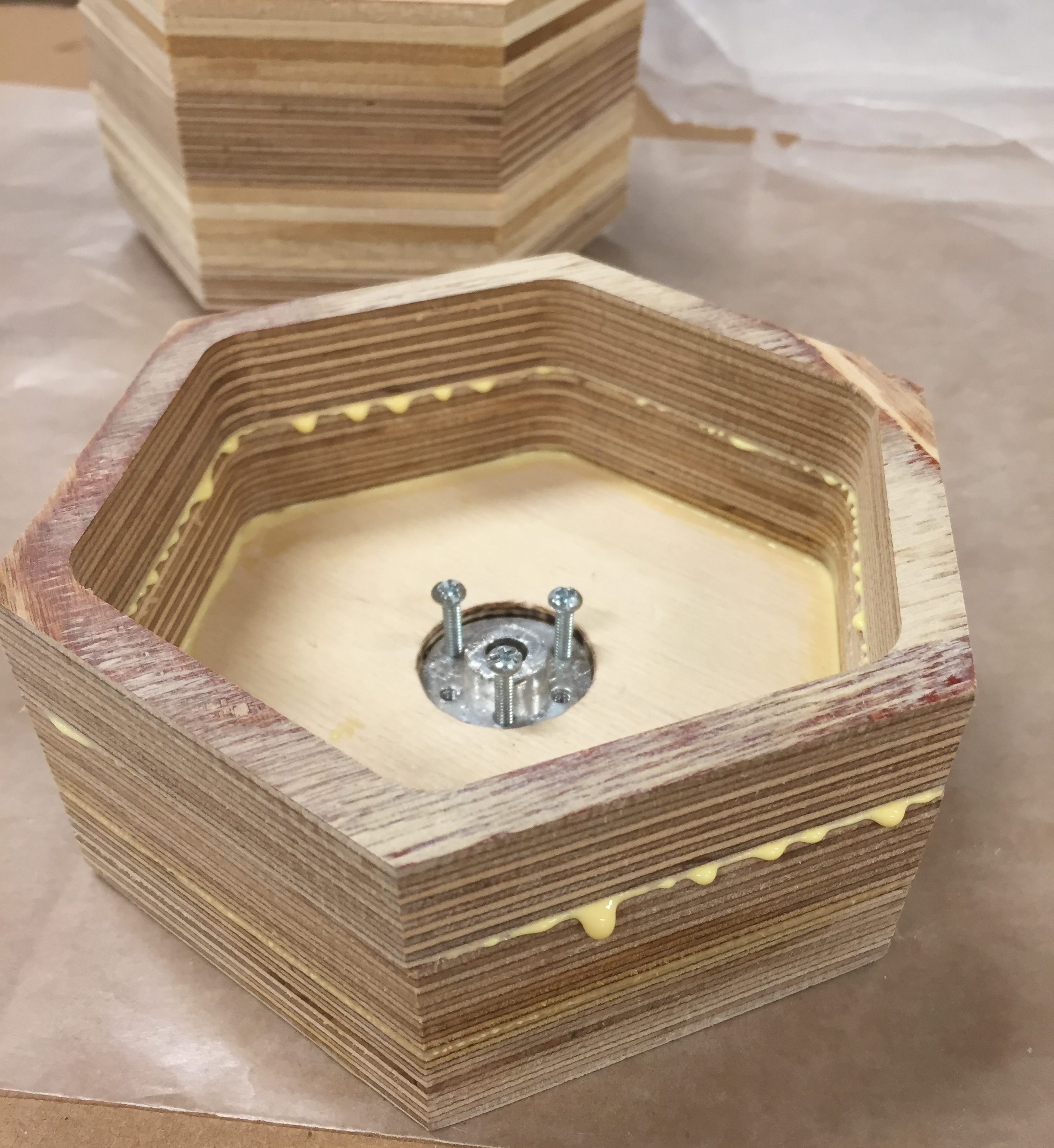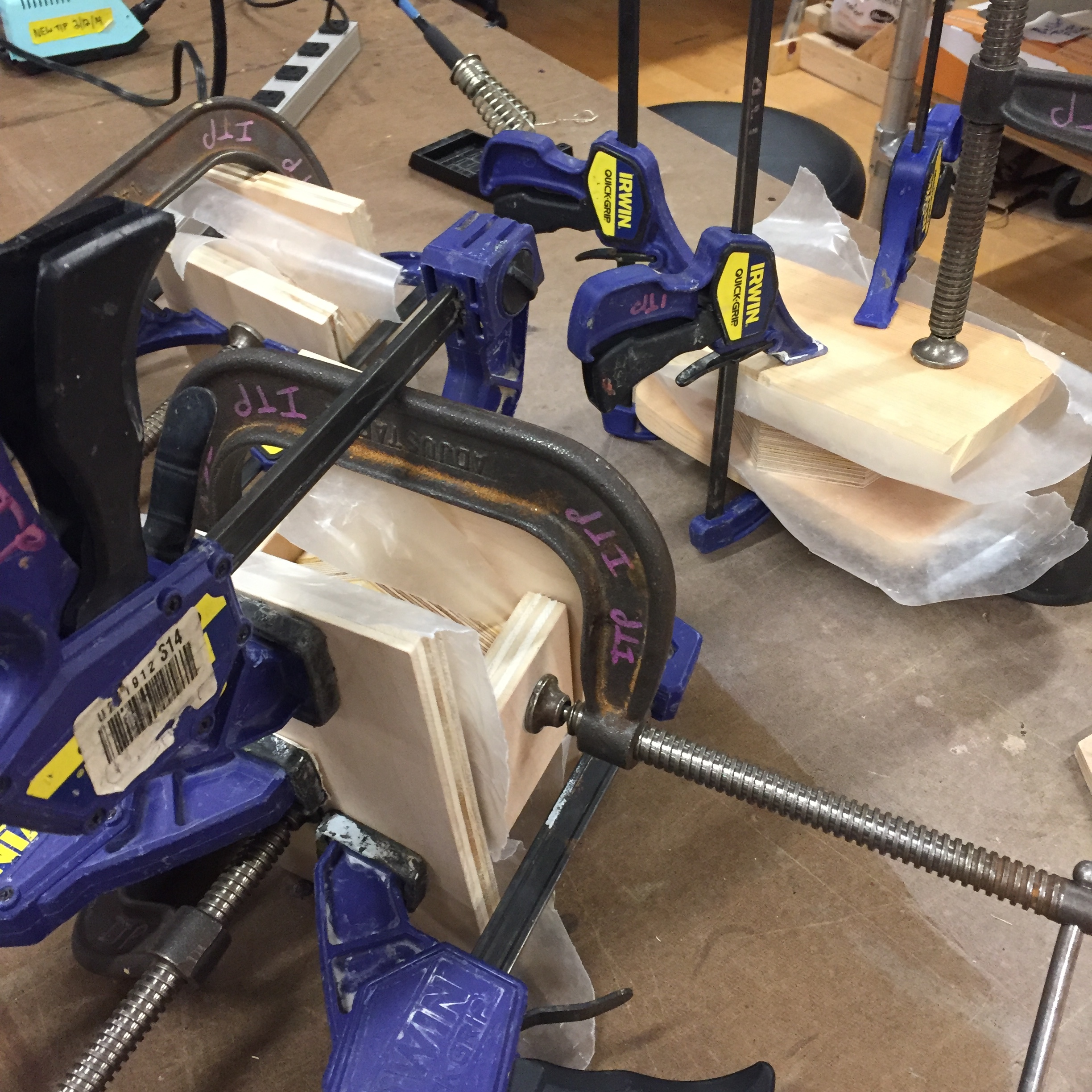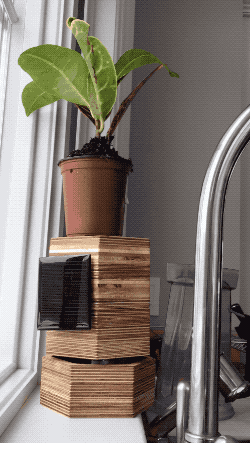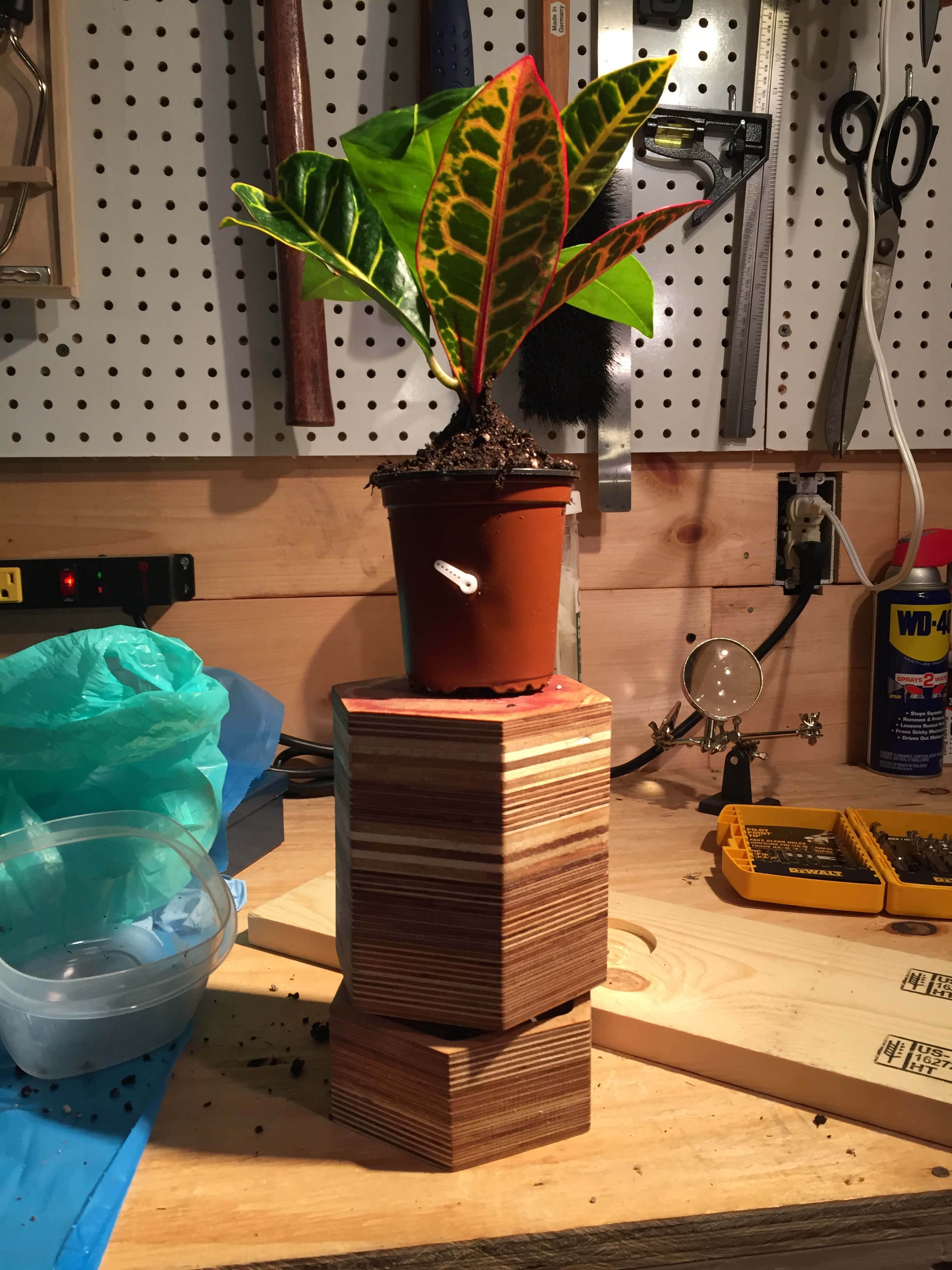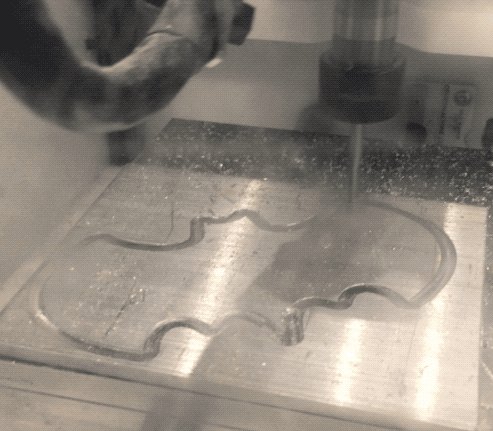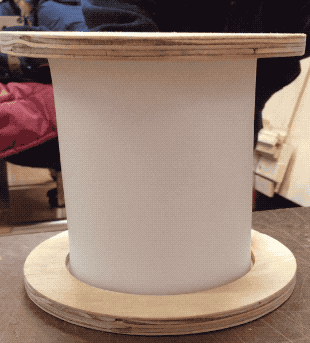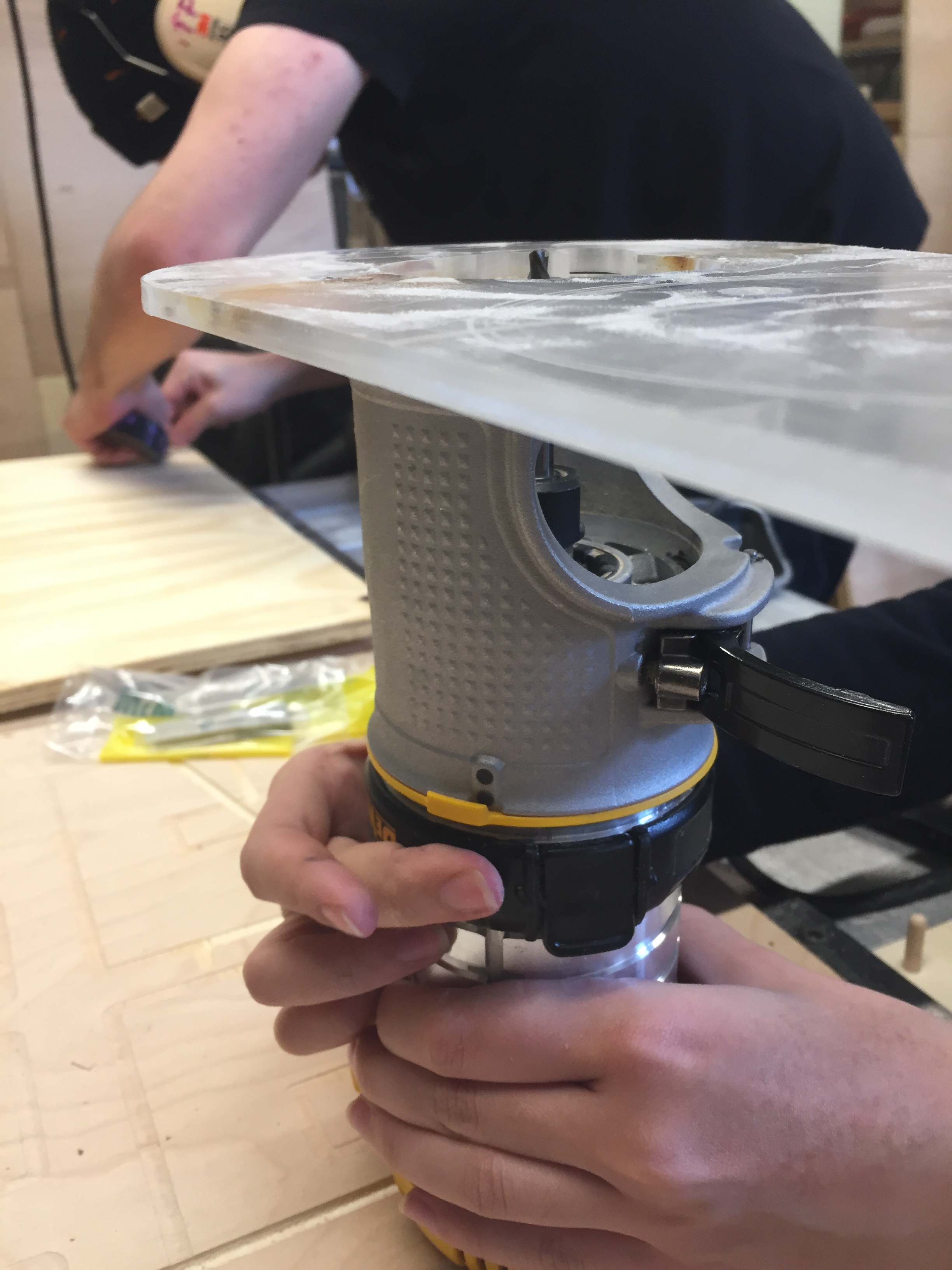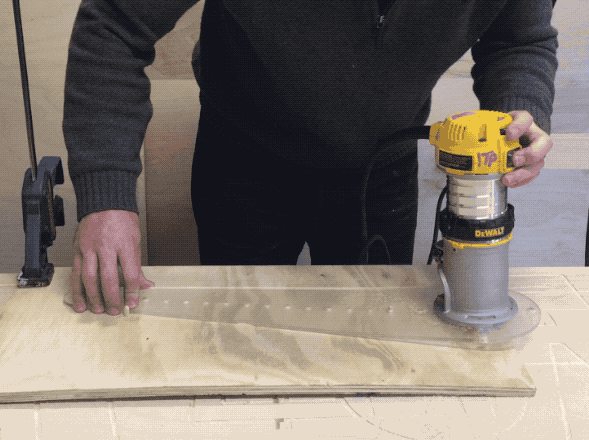Final photo first. This is my final project for subtraction - a hanging window planter experiment!
I have had some seeds, twine, and plastic cups on hand for a while and was wondering what to do with them, when I happened upon some wood in a dumpster.
I ran into this dumpster on my way to class one day. How could I pass it up? I really wanted ot grab more wood, but I had a train ride to take, and it would be quite cumbersome to take plenty. Seeing as this single piece was help firmly together, composed of a few short pieces, and relatively lightweight, I grabbed it alone.
I determined that the two main 2x4's would be the pieces I would use. Since my window is about that far embedded into my wall, this would keep the piece from jutting too far out into the room.
Conveniently (most of) the holes that were used to screw these boards into the other vertical boards made it easy to affix these pieces to the CNC board. They would also become my holes for the twine fixtures later.
I should have perfectly placed my piece in Master Cam, or at least gone back and forth until I got it perfectly right, but found myself rushing through that a bit in order to get to the CNC. However, when I got there I realized I did have to measure and guess and check a few times before placing my boards down. I only had 3 inches of room - about 0.5 in. on either side - with which to work in. I had a test board and tested placements of circles after setting zero, which I'm thankful I did otherwise I would have wasted at least one board.
Even so, I ended up being about 1/8-1/4 of an in. off, which is actually quite noticeable. I attempted to rectify my mistake, but only succeeded in pushing my piece too far the other direction. No worries, it still looks beautiful, and the cups will hold.
The next step was to prepare my planters. Also, when I went outside to get the compost for these cups - for part of this project is to test my various compost mixtures out, along with my mycelium - I found my oyster mushrooms had bloomed! How wonderful and surprising.
I prepared a qualitative range of mycelium amounts - from a lot to very little, with one type of compost in one row, and in the other row I filled 9 cups with my 3 compost types, 3 each, with the tenth cup being a mixture of all 3 types.
Afterwards, I sprinkled a mixture of microgreen seeds, and mixed them in a little so most were beneath or at least covered in soil. Then I watered them.
I should have probably done this all after hanging the piece up, because at this point it was a little heavier and unwieldy to hang, but I was just tall enough to reach. I used two thick hooks screwed into the 2x4 cross beam above my window to hang this whole piece.
There are 4 strings of twine altogether, two holding the two pieces of wood to each other, and two holding the whole piece to the hooks in the ceiling. At first I was dismayed to see it's severe imbalance. But the great thing about strings is they can be played with. I was able to jimmy them into mostly the proper position.
Now I just wait for the seeds to sprout! Amazing how cool a bunch of free junk can be when
Edit: Some sprouted!


